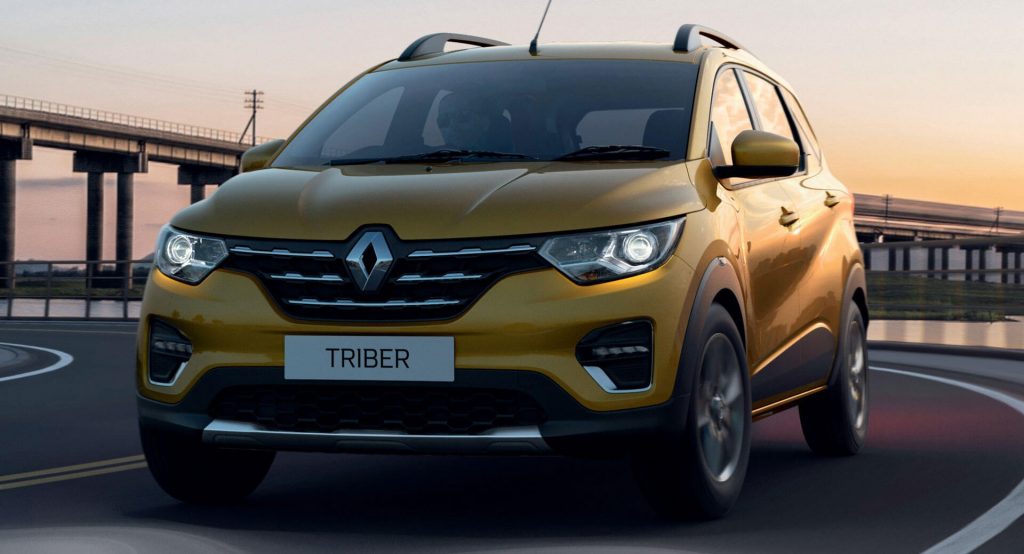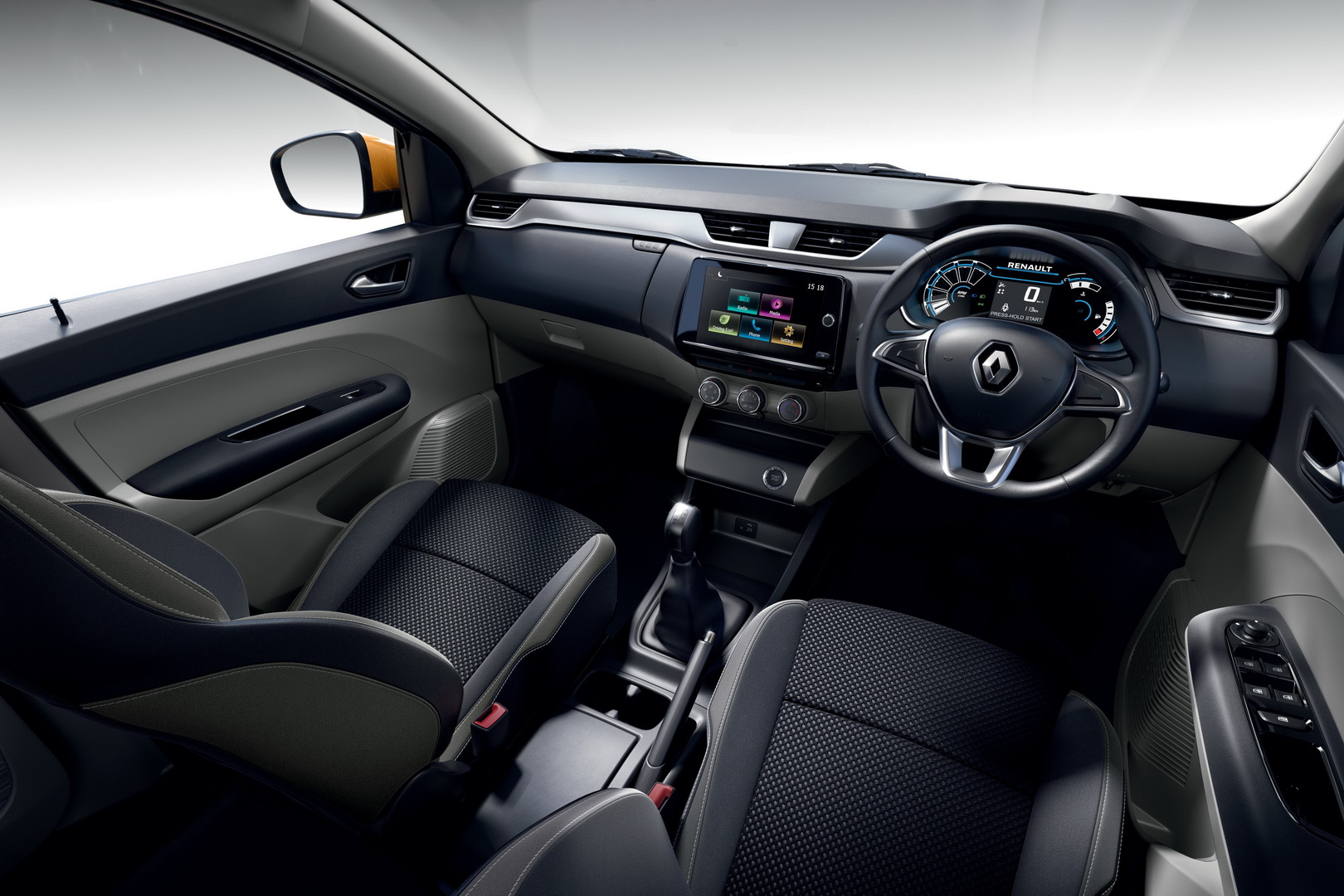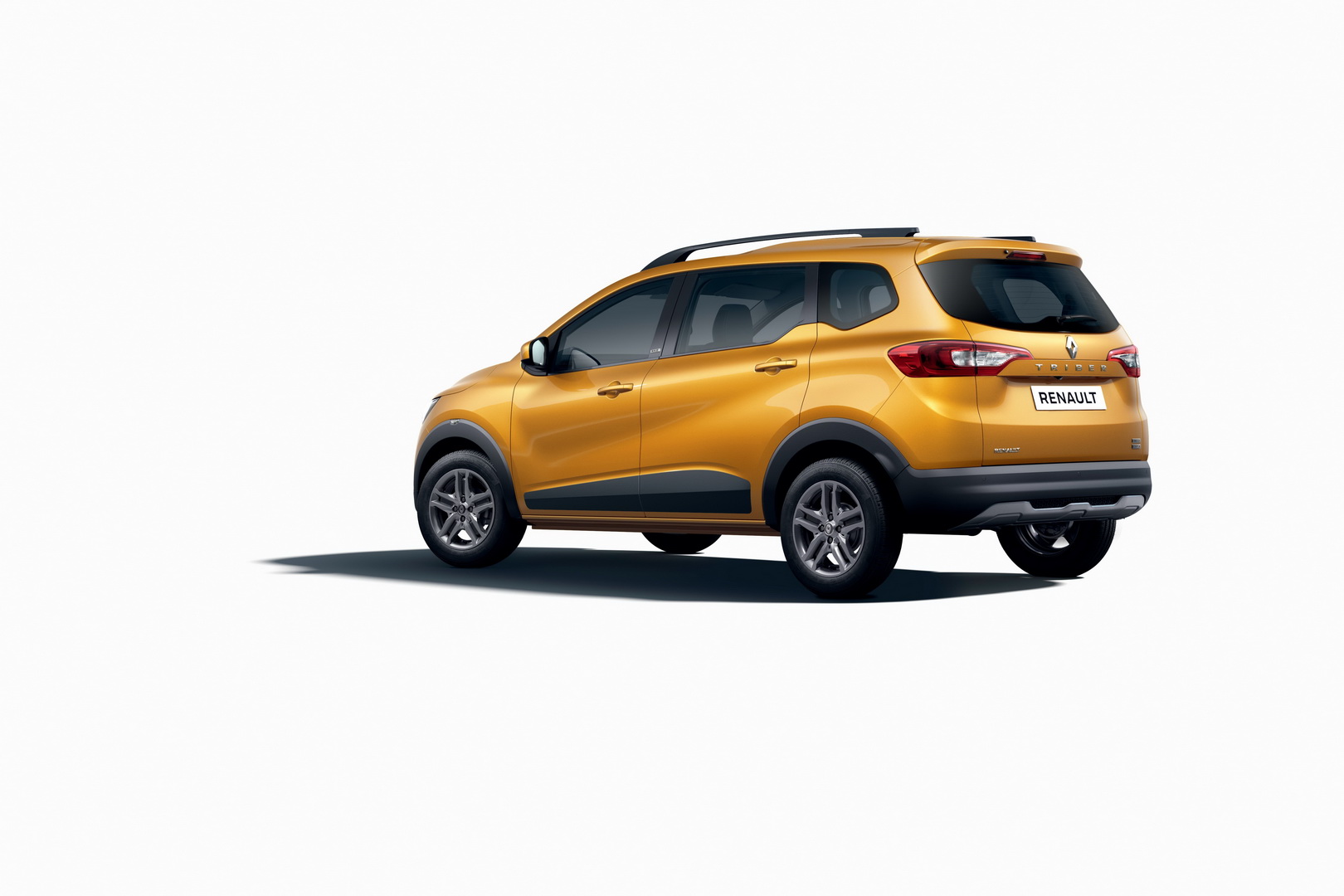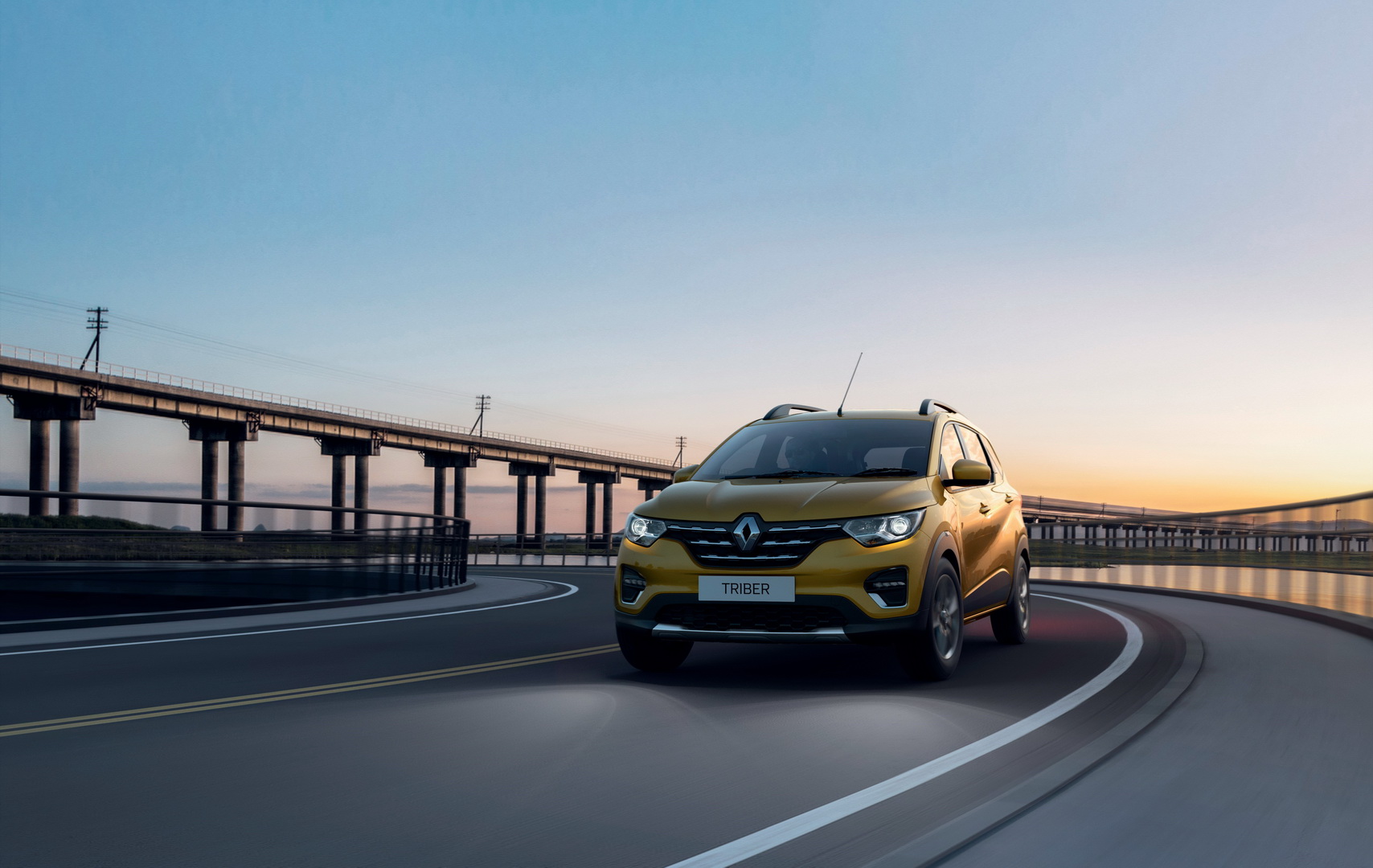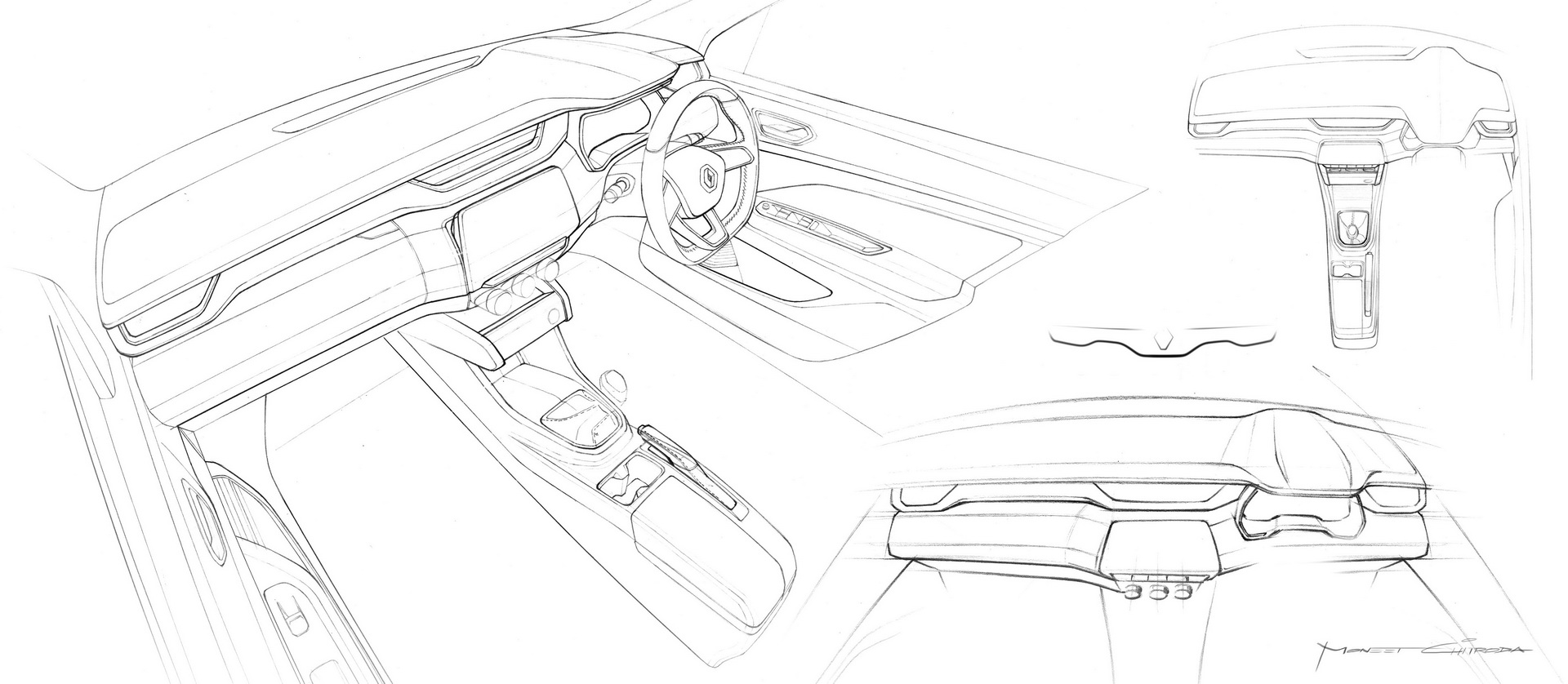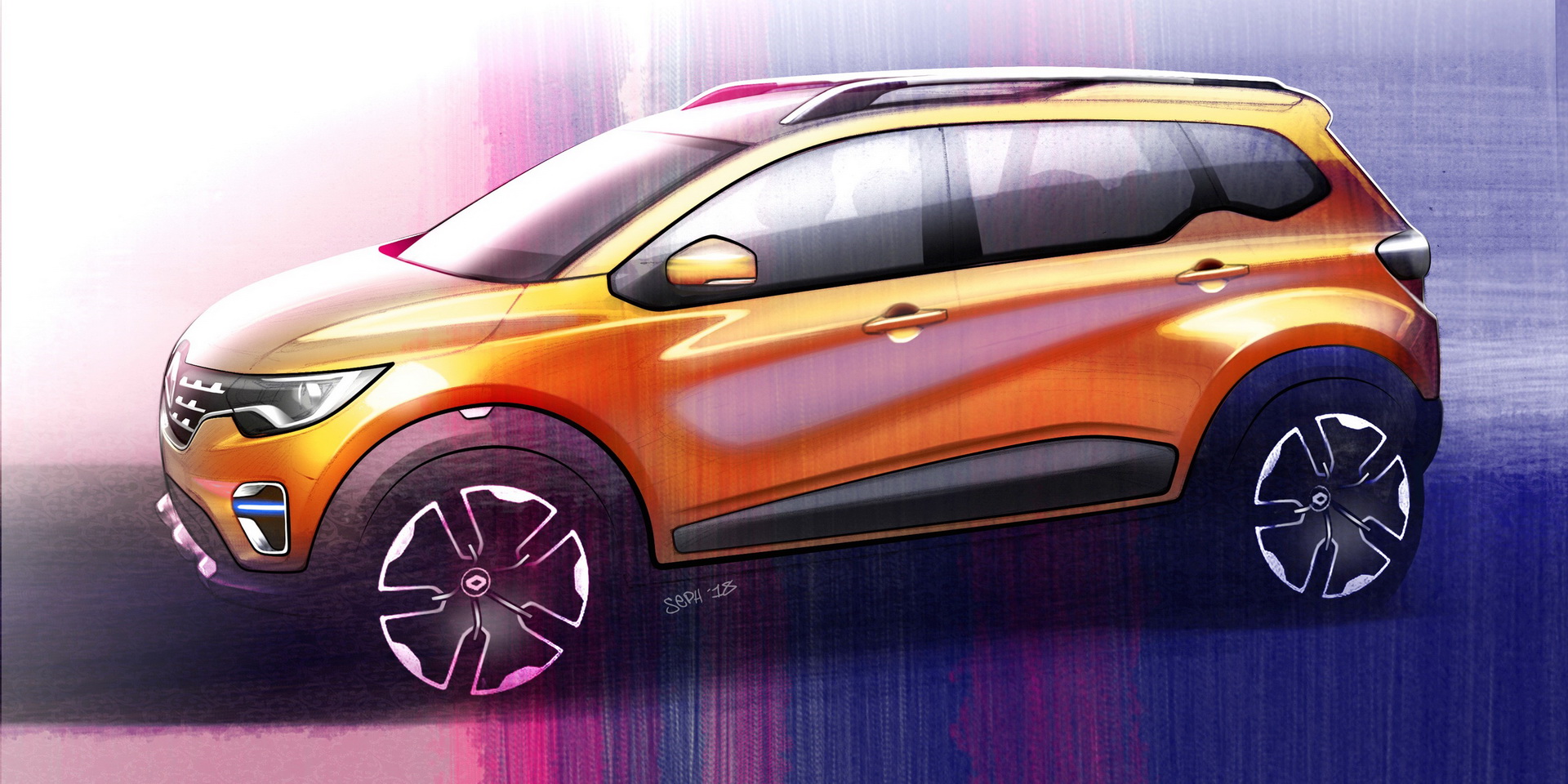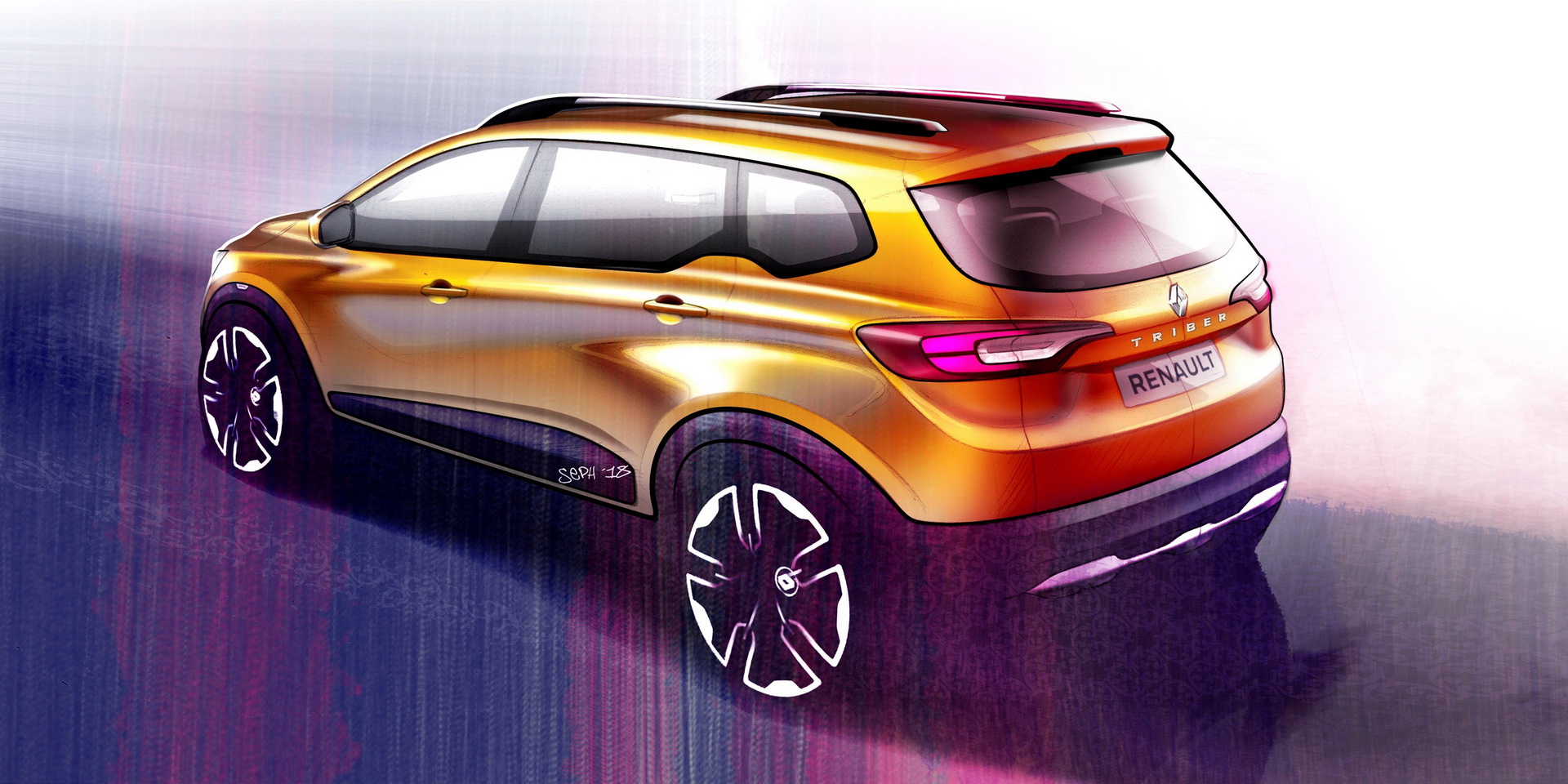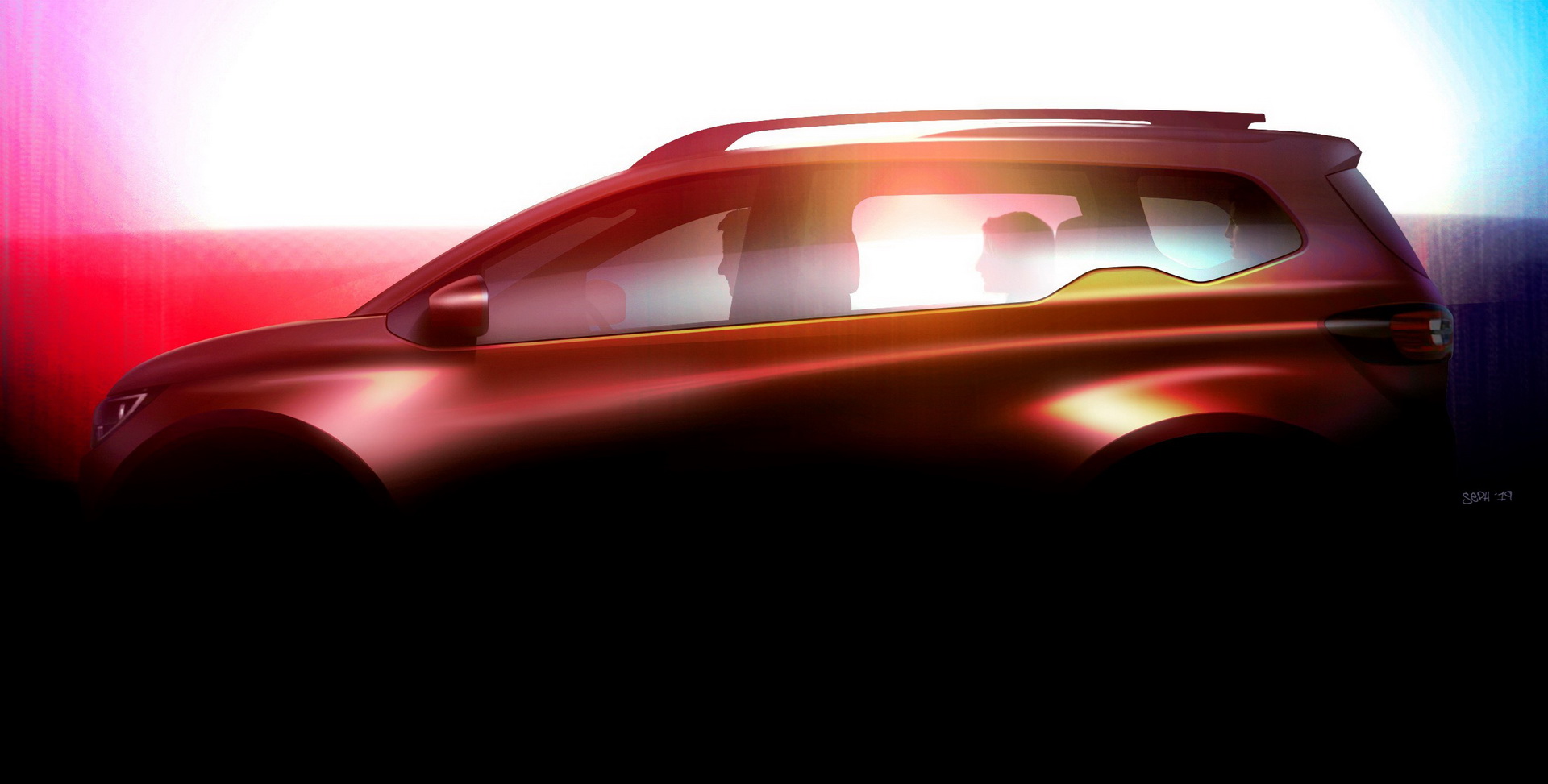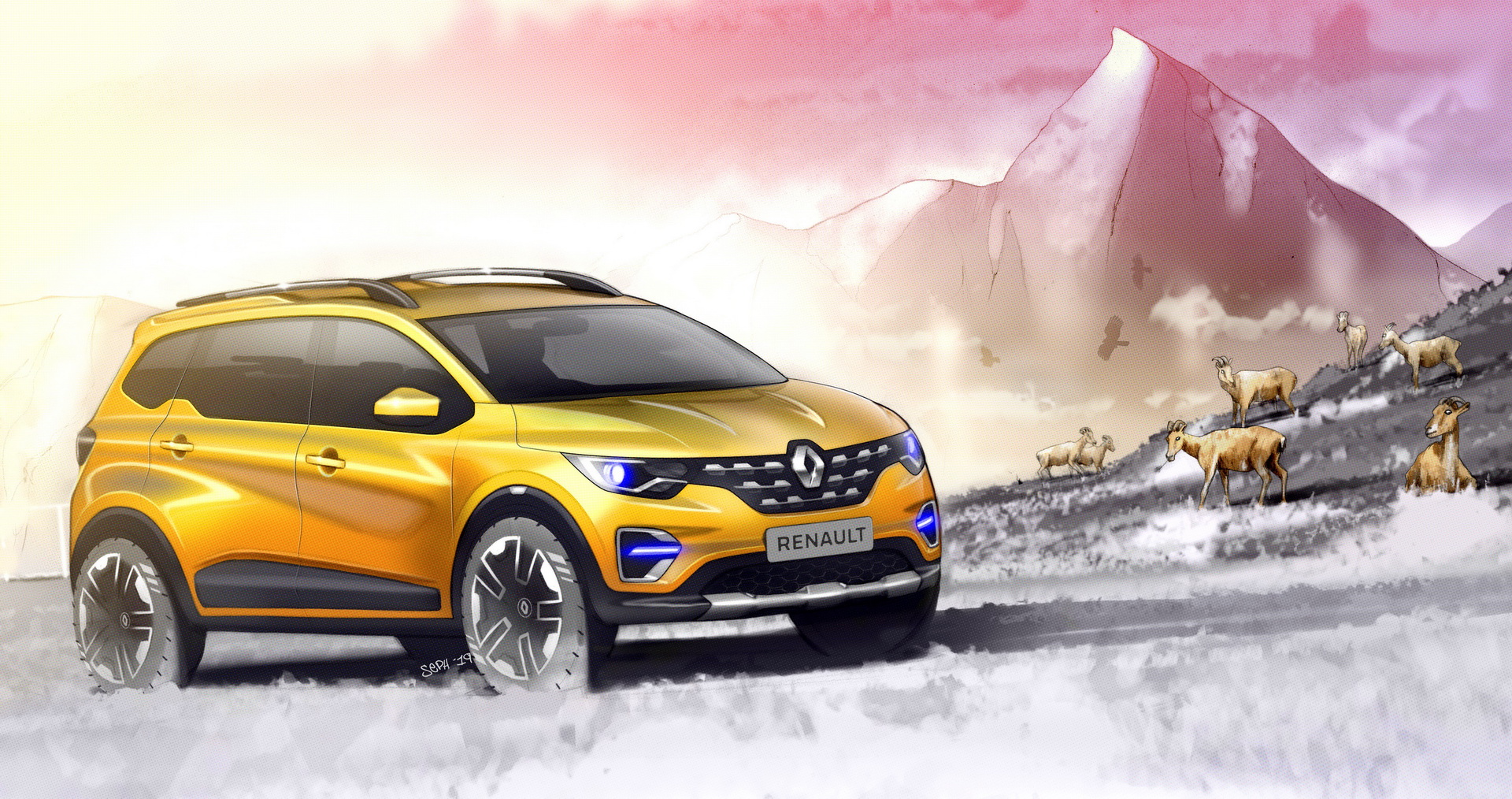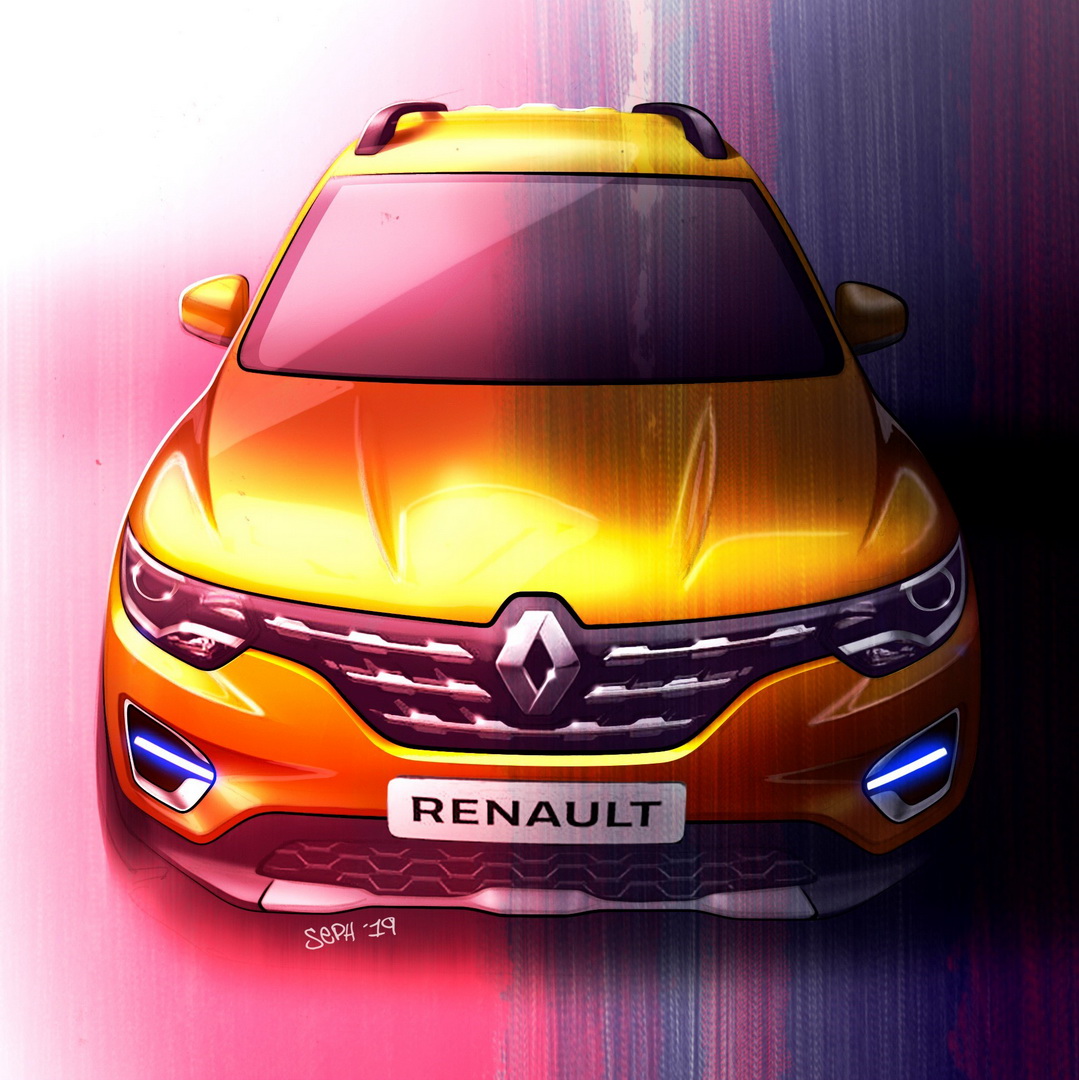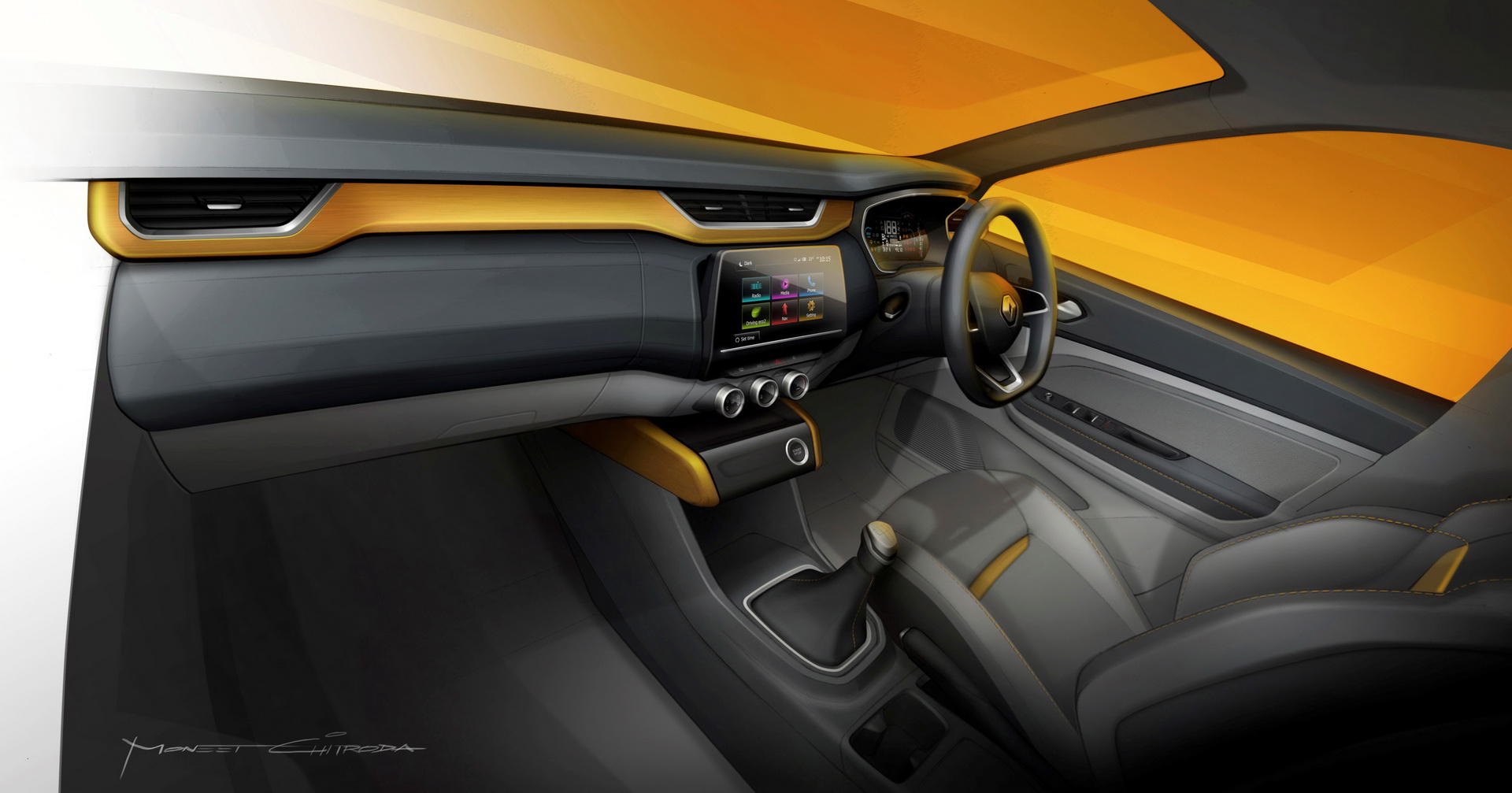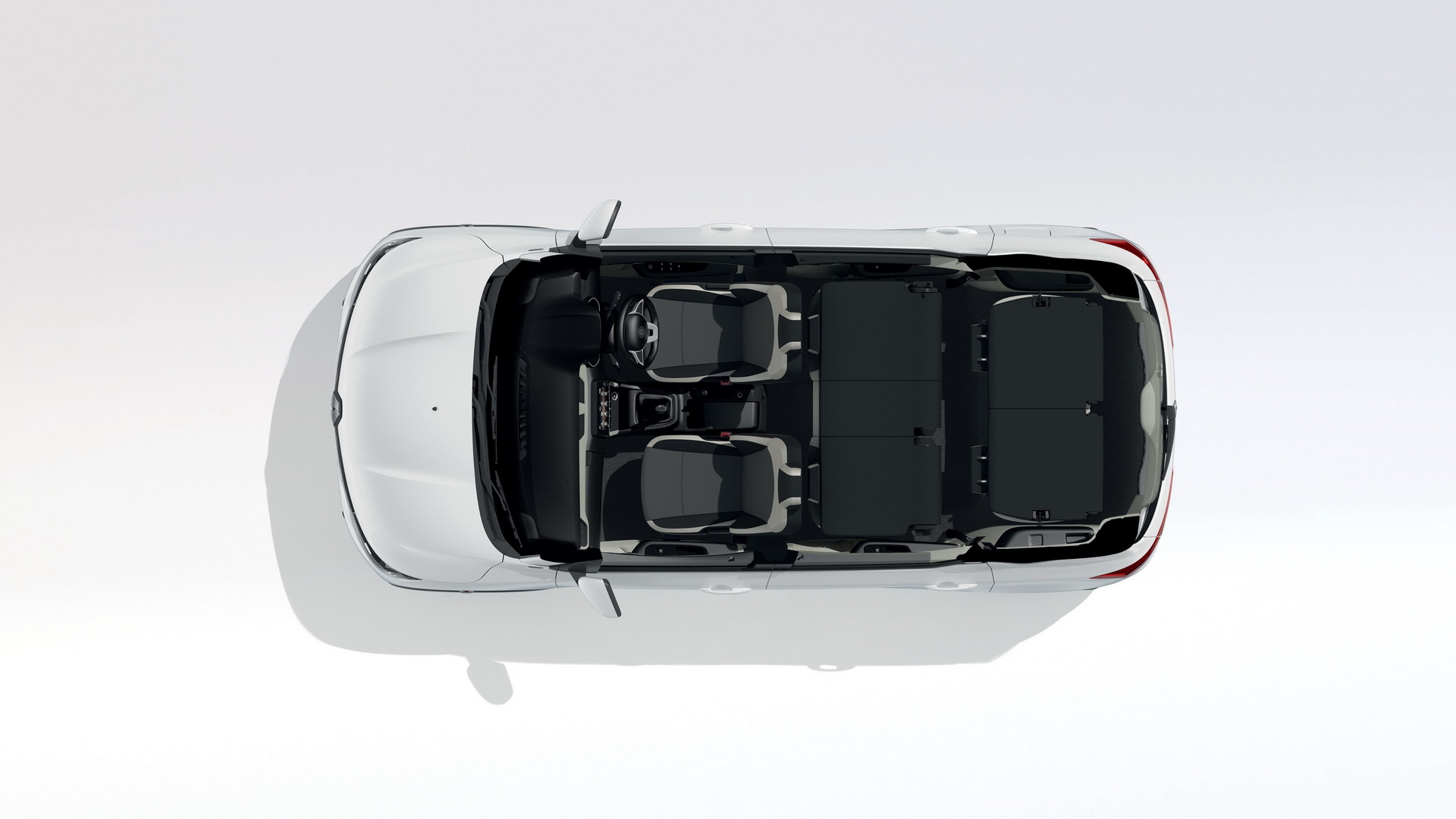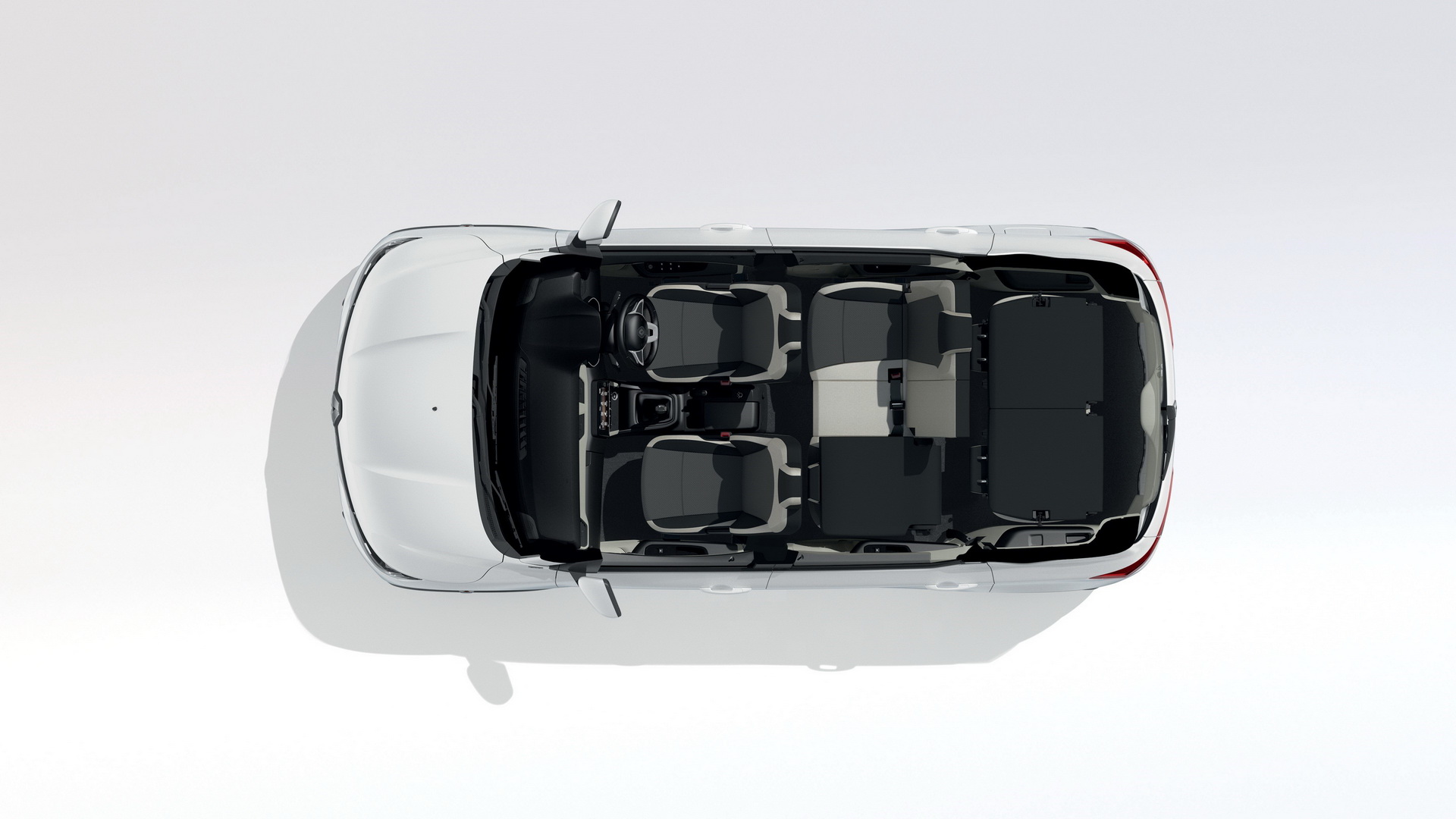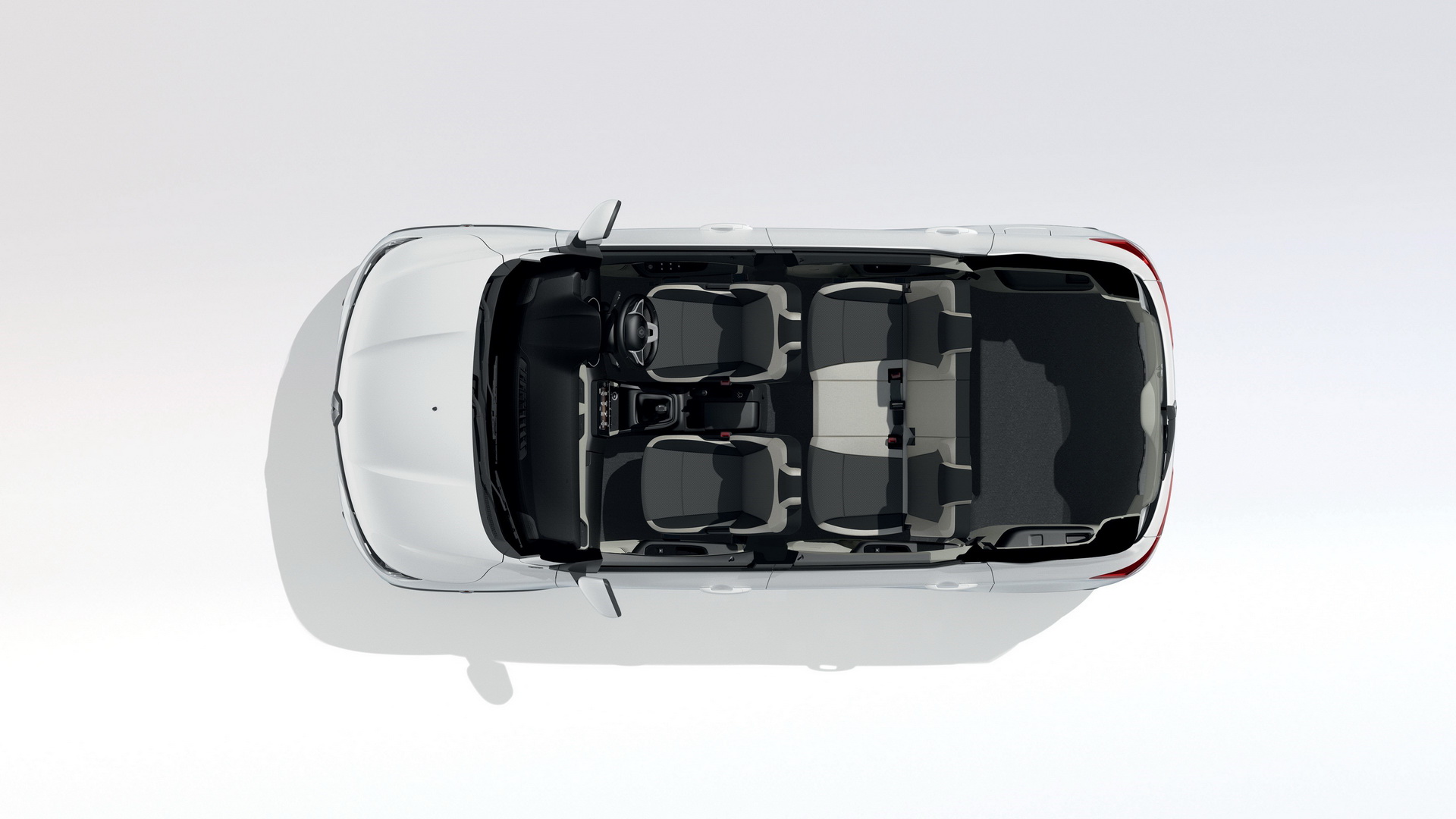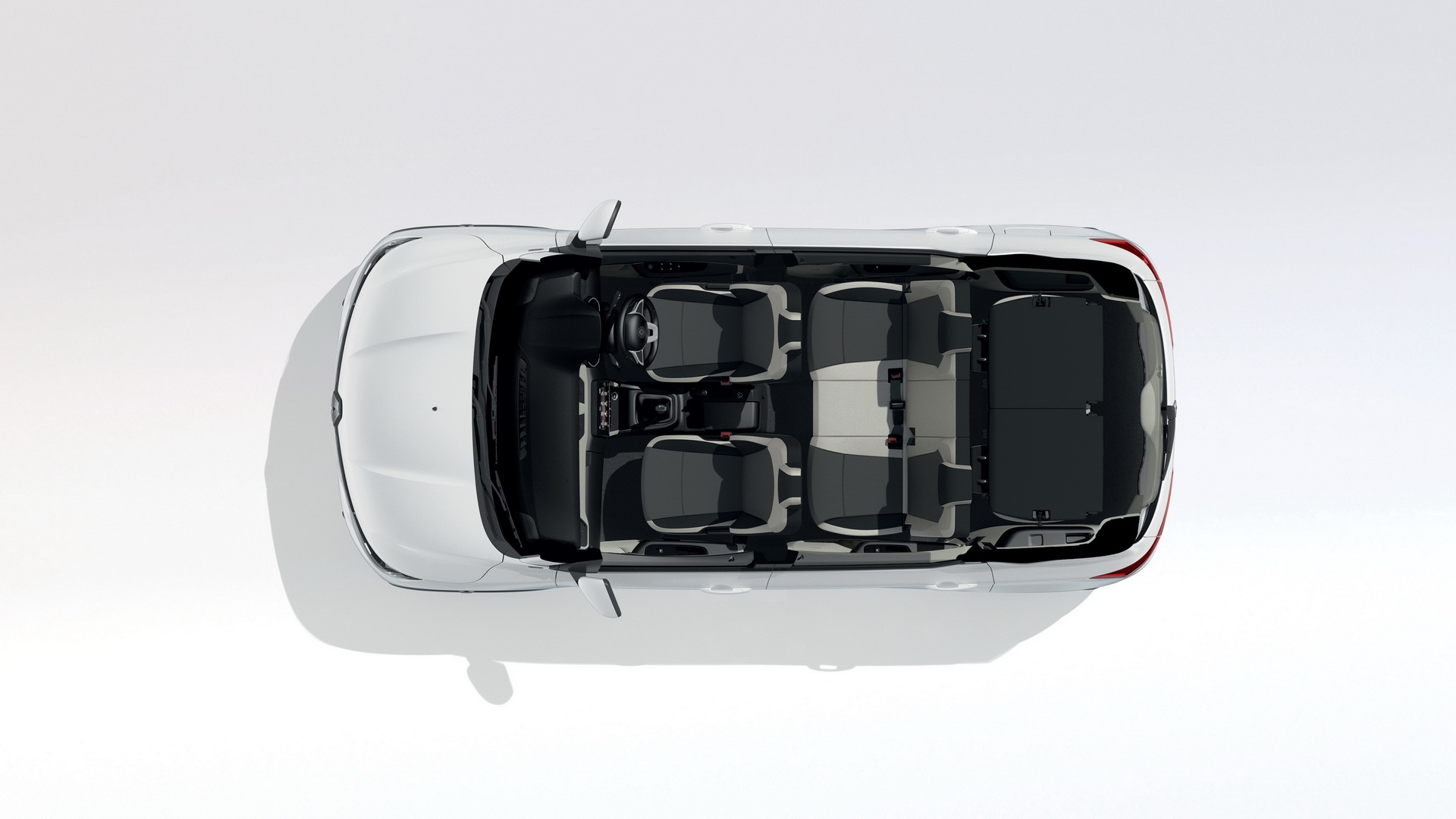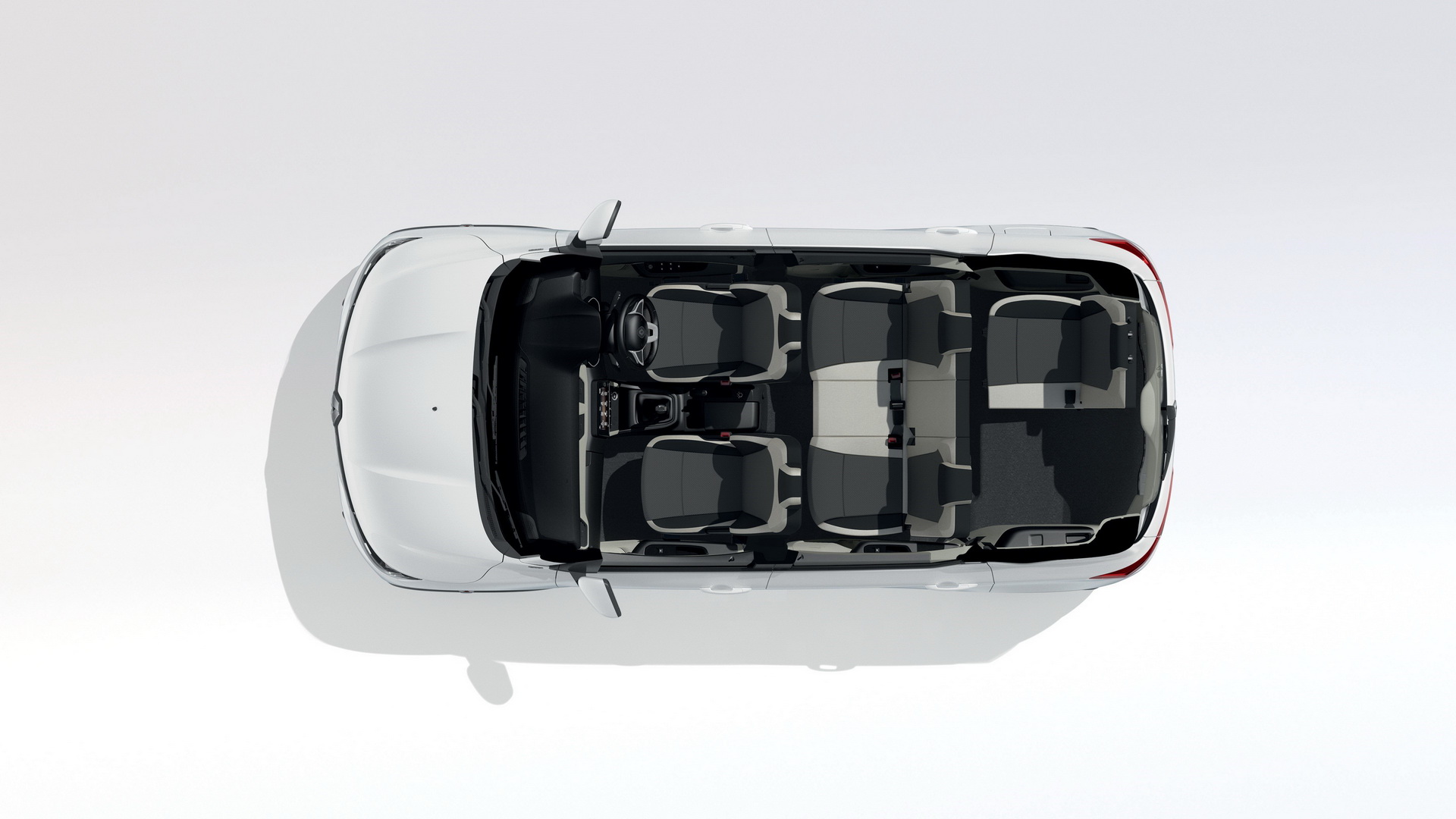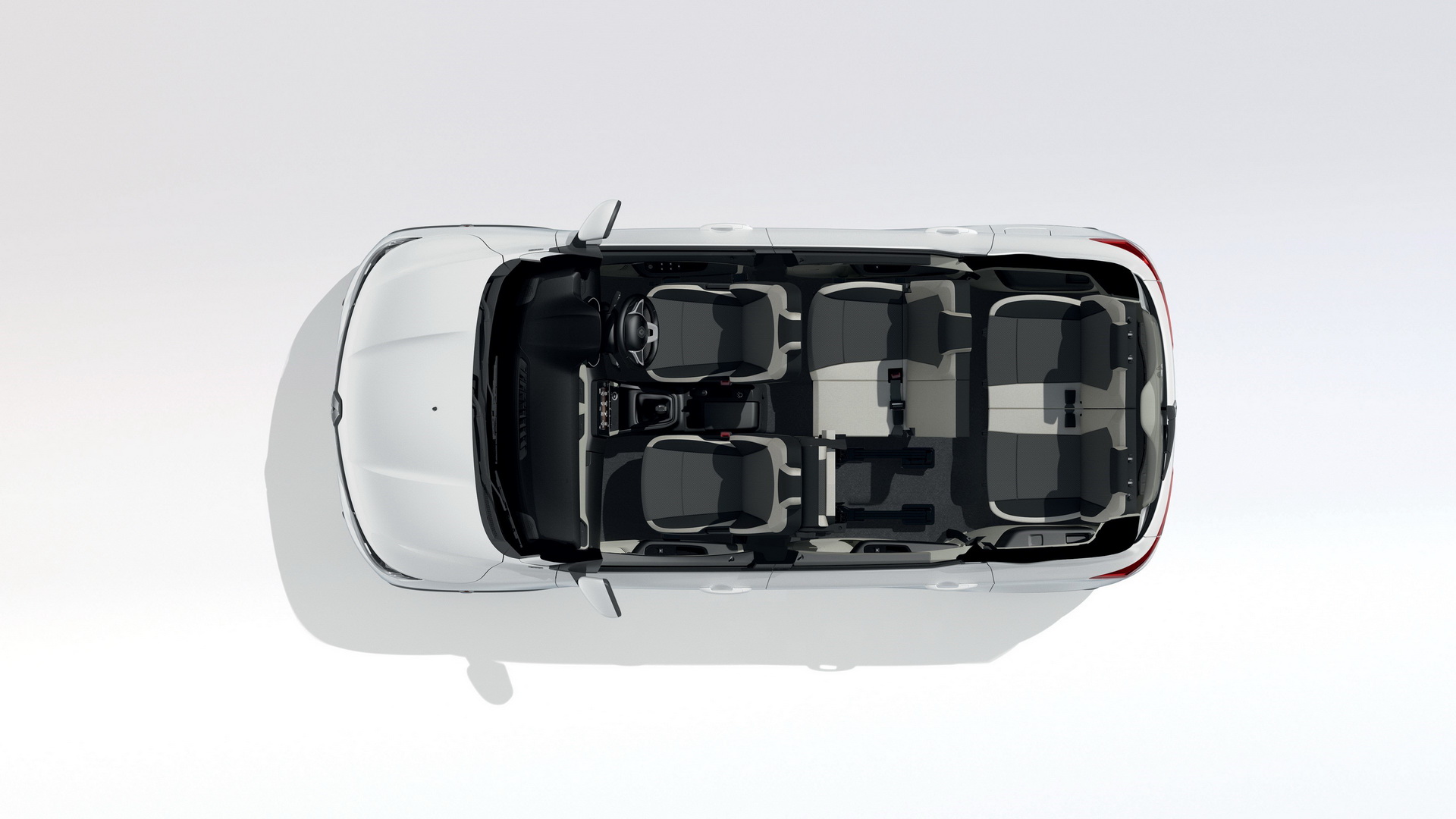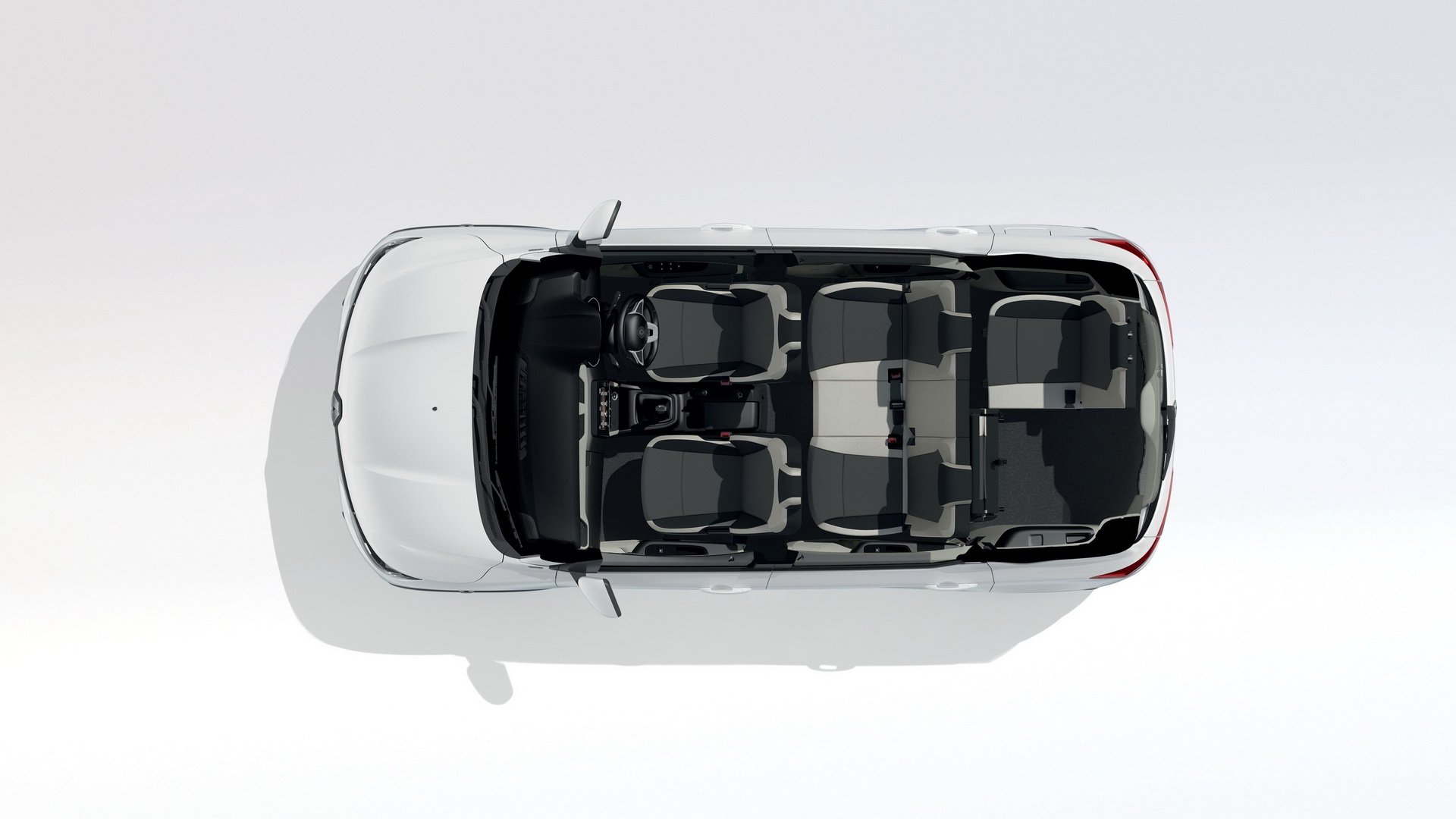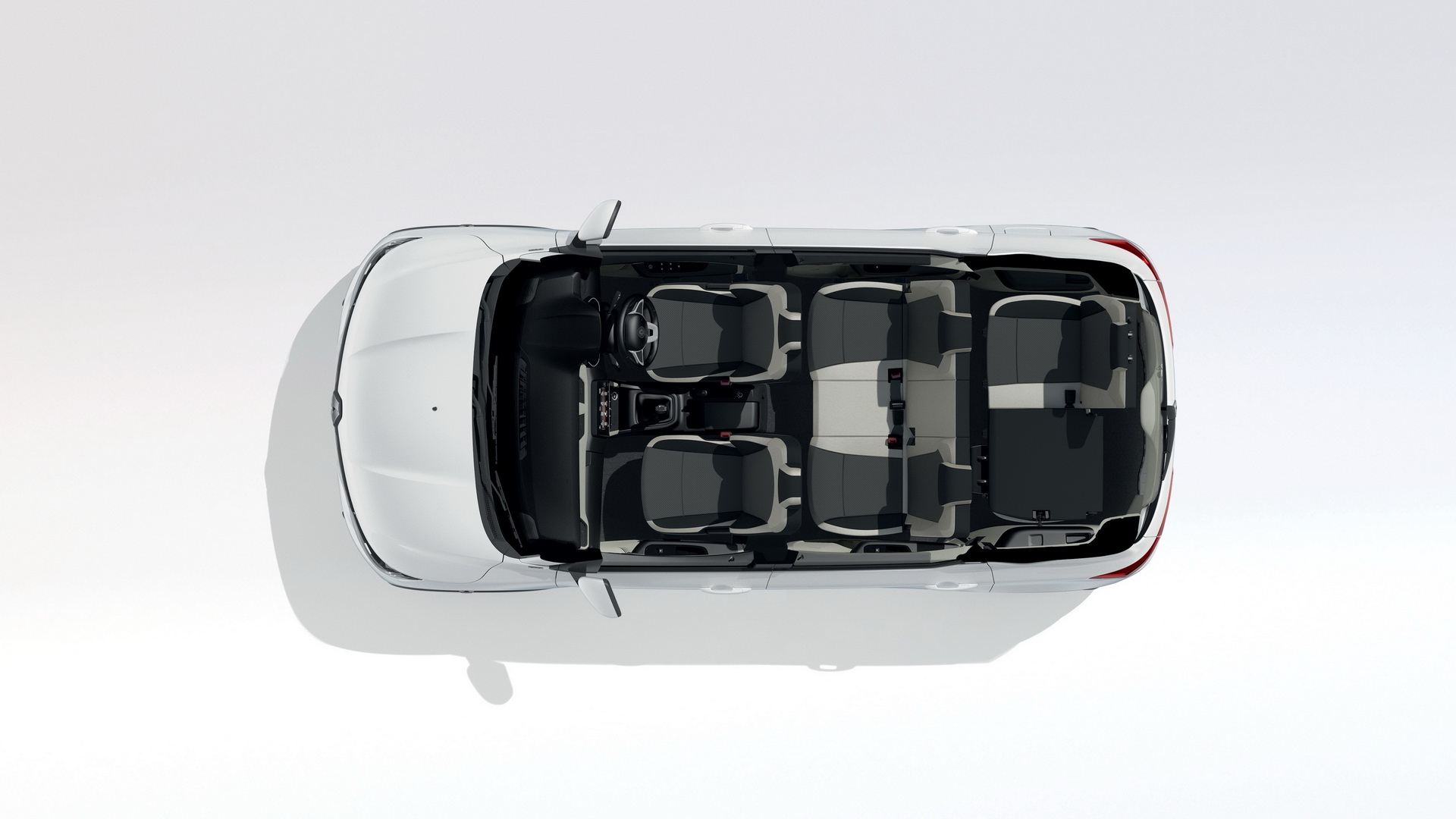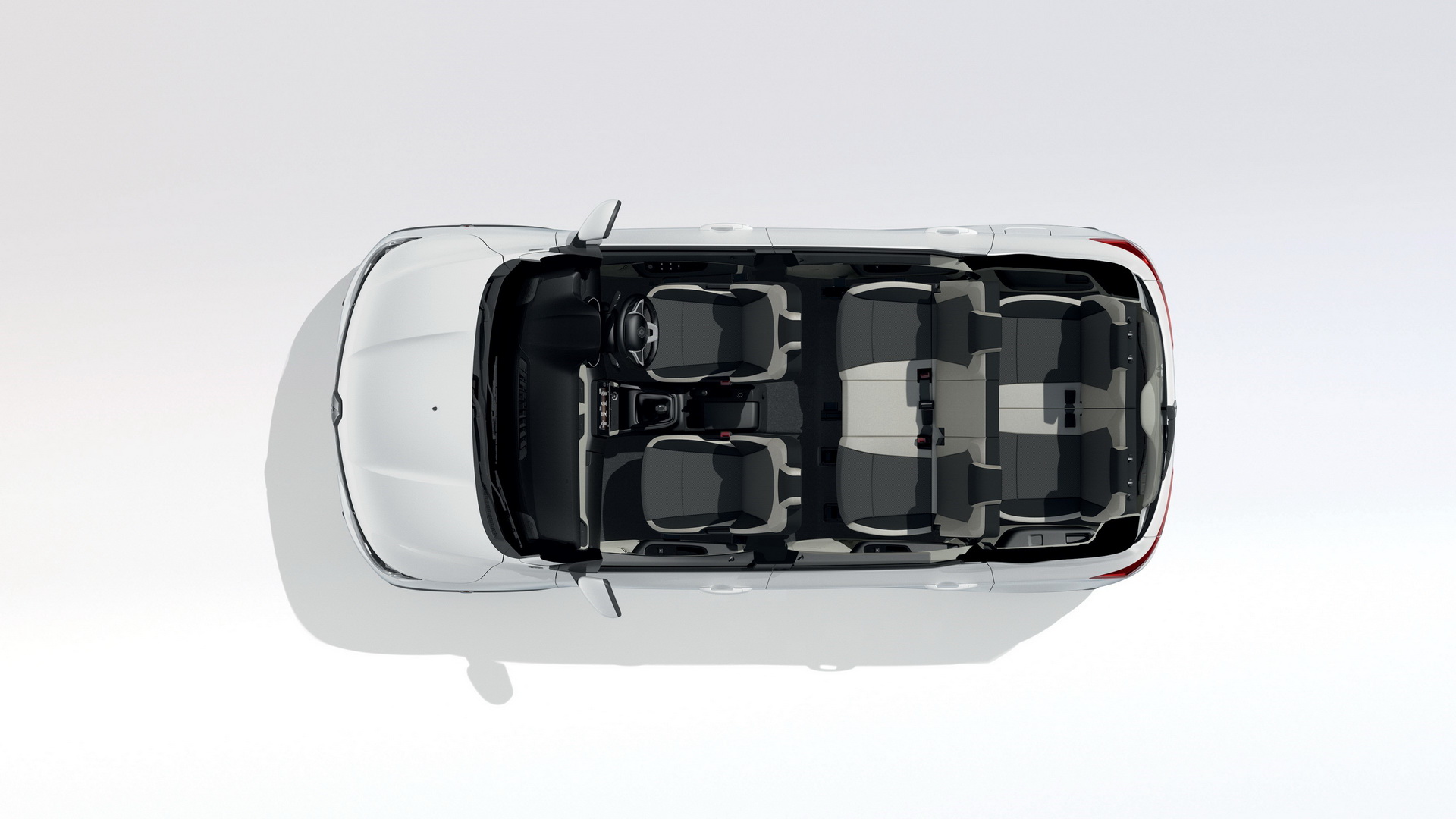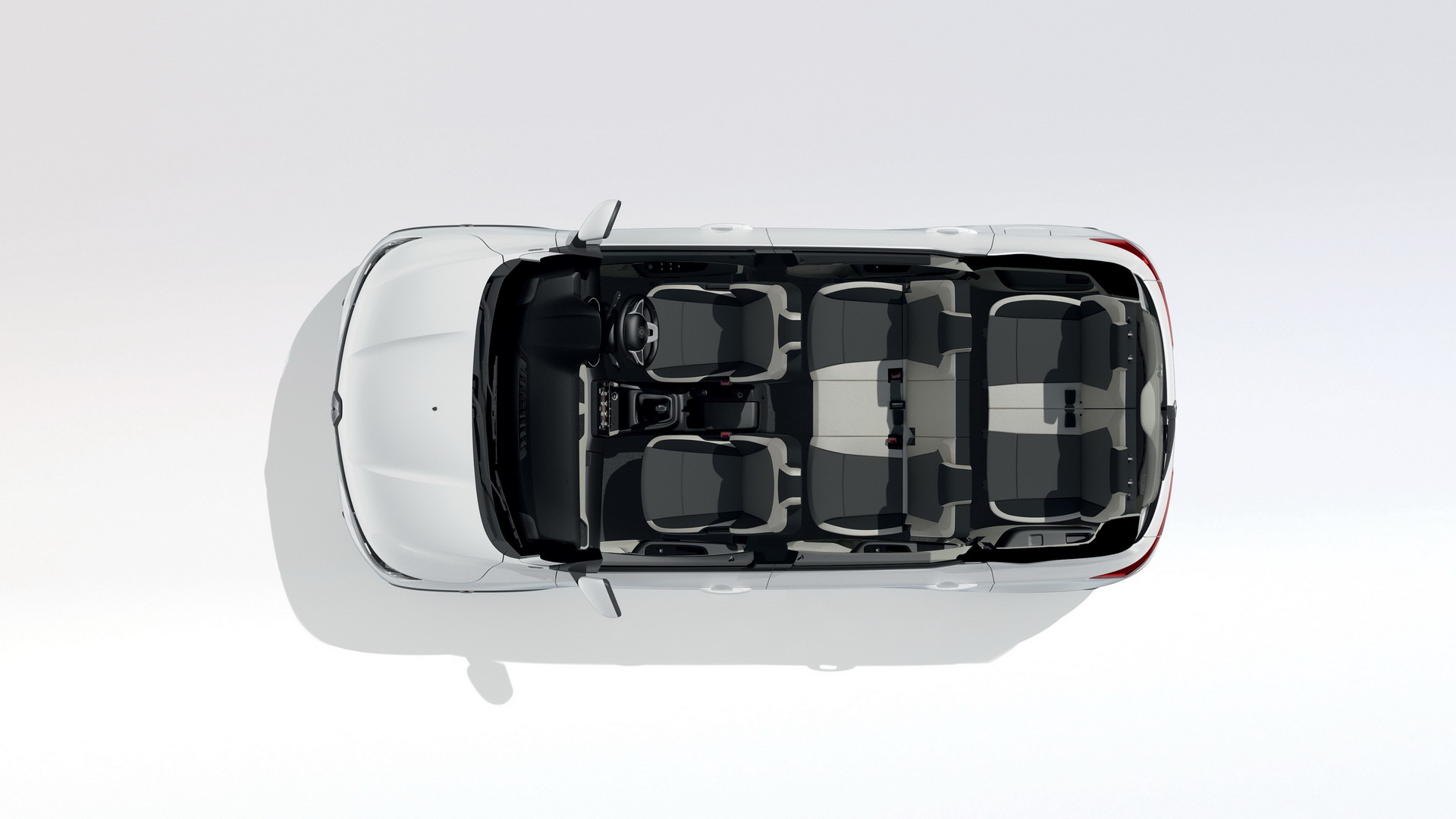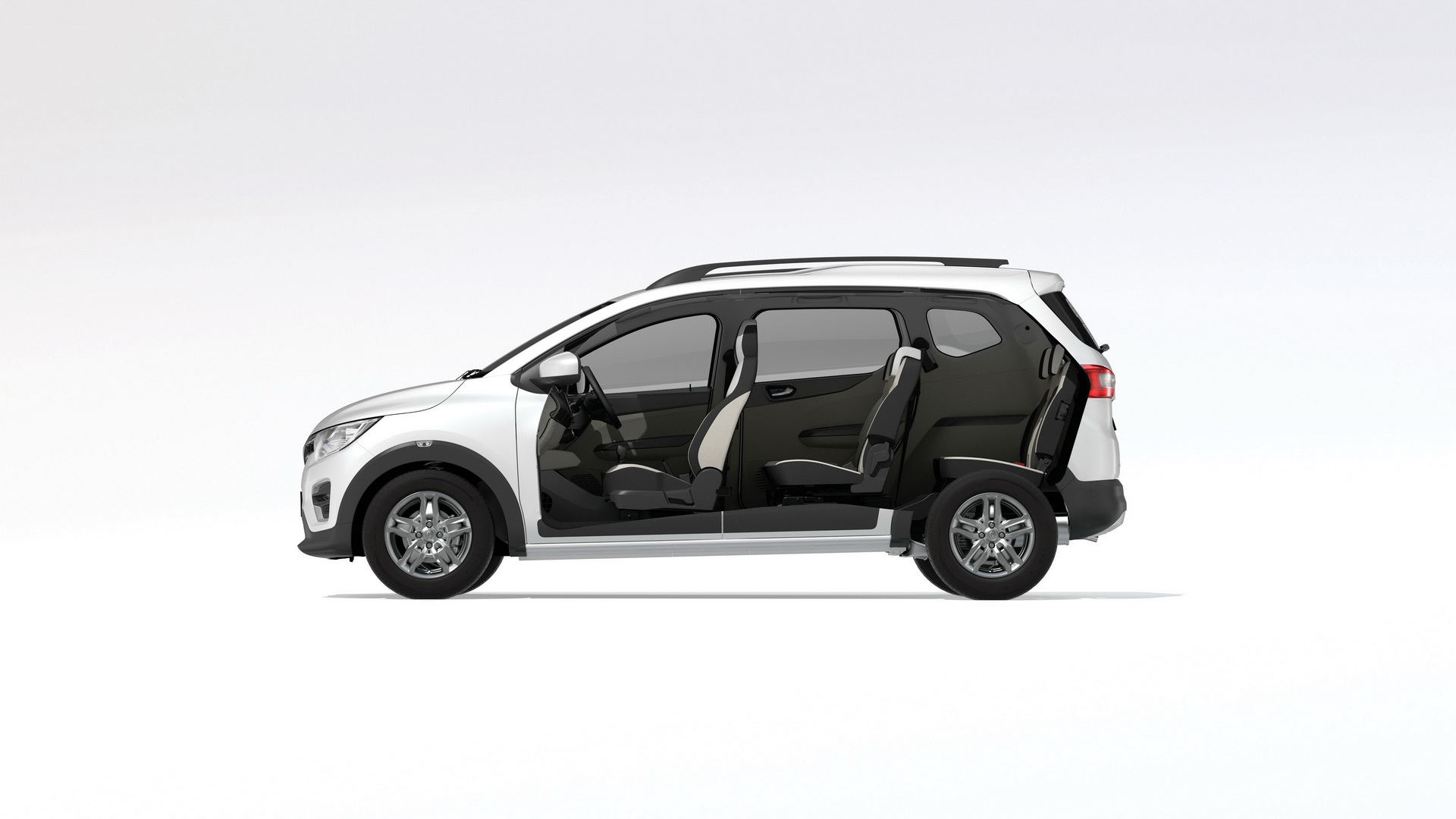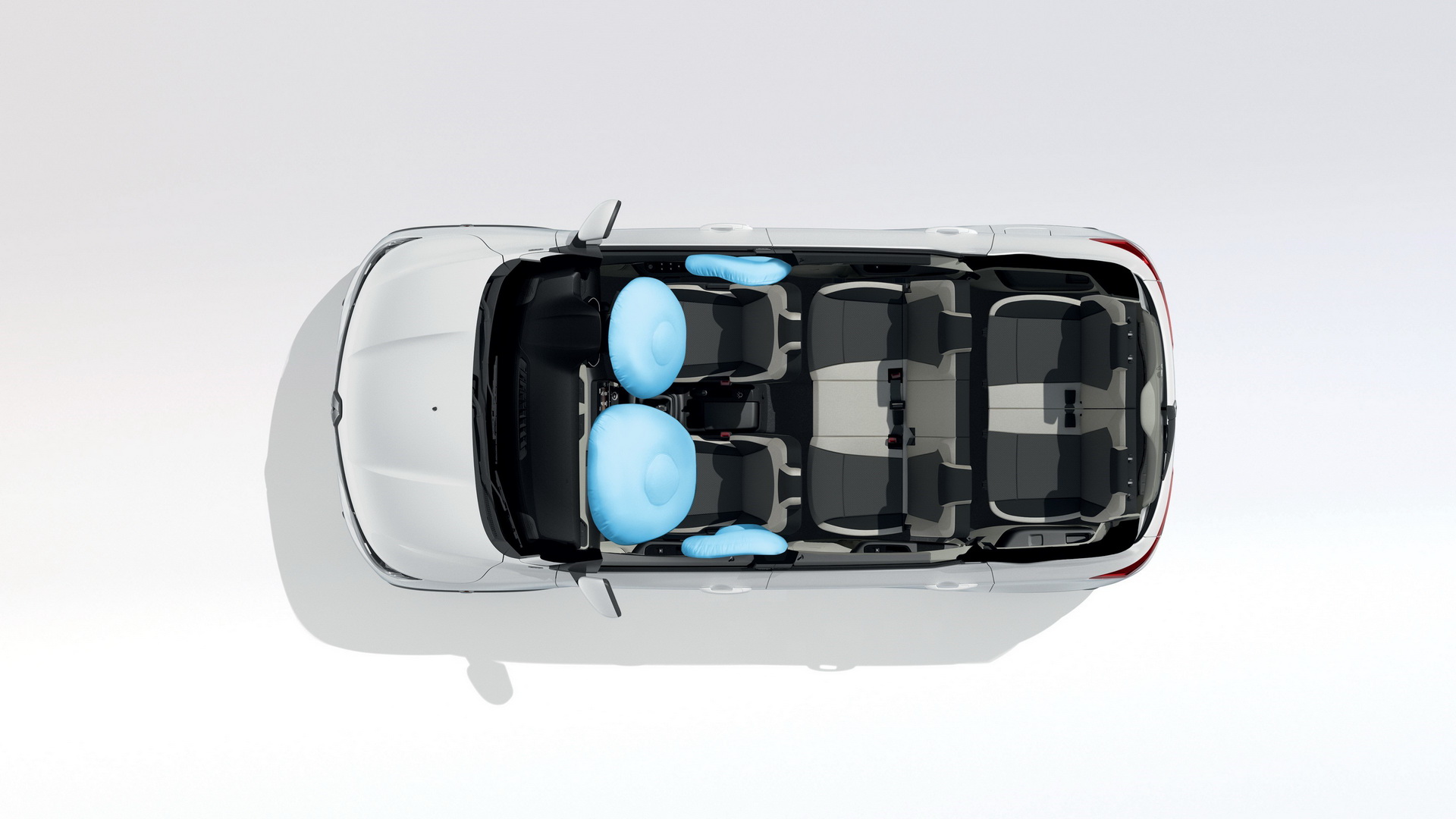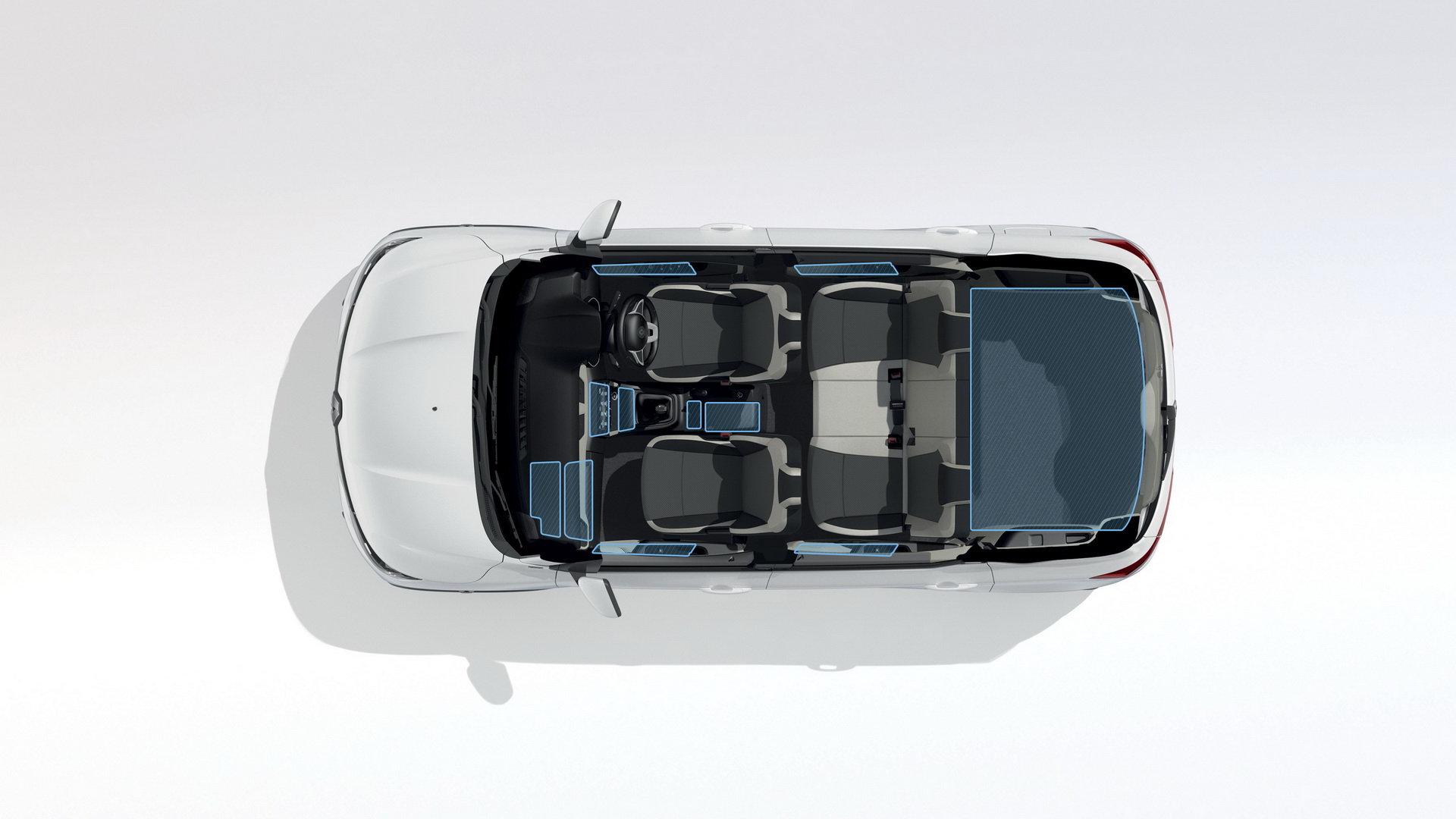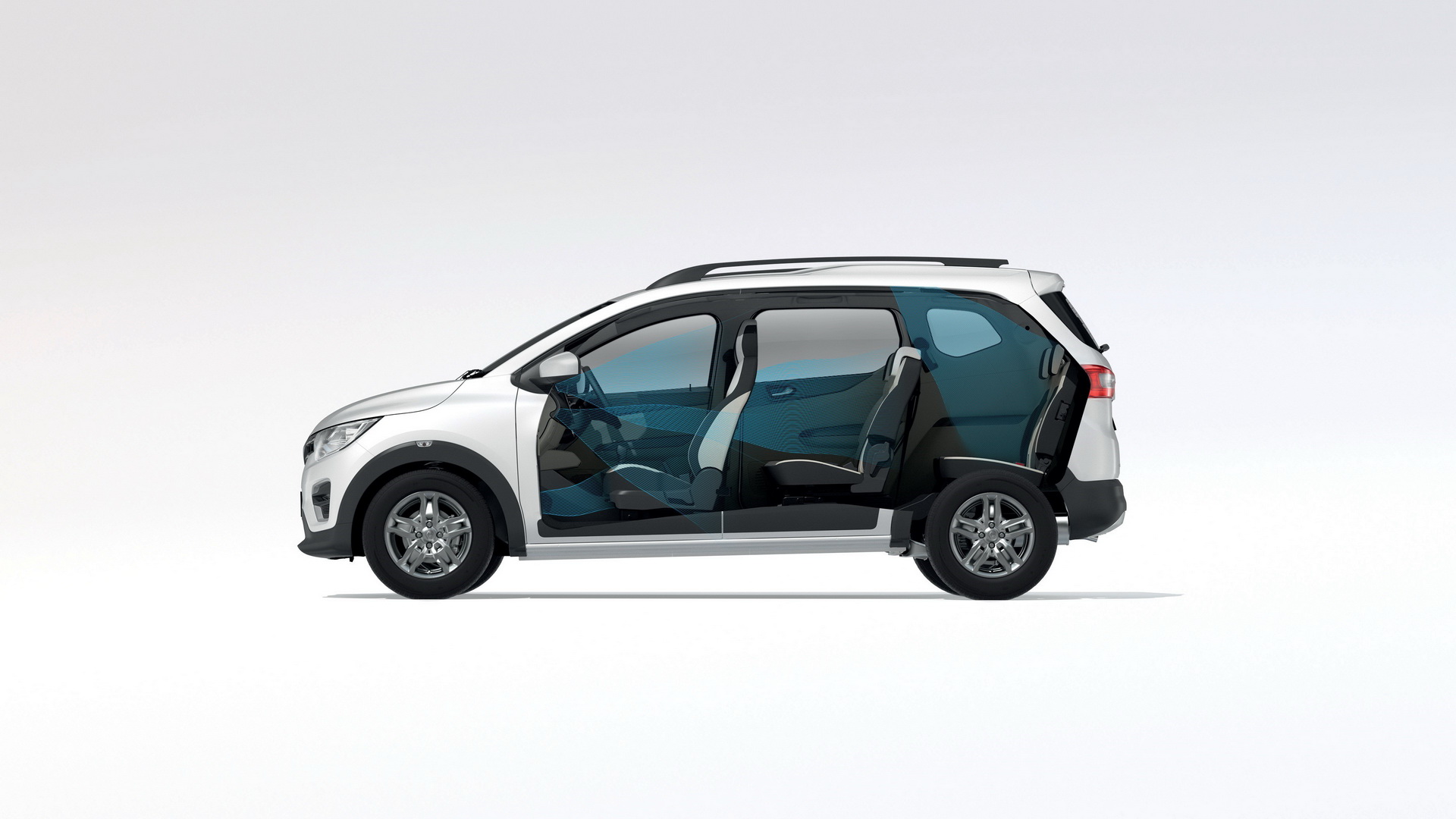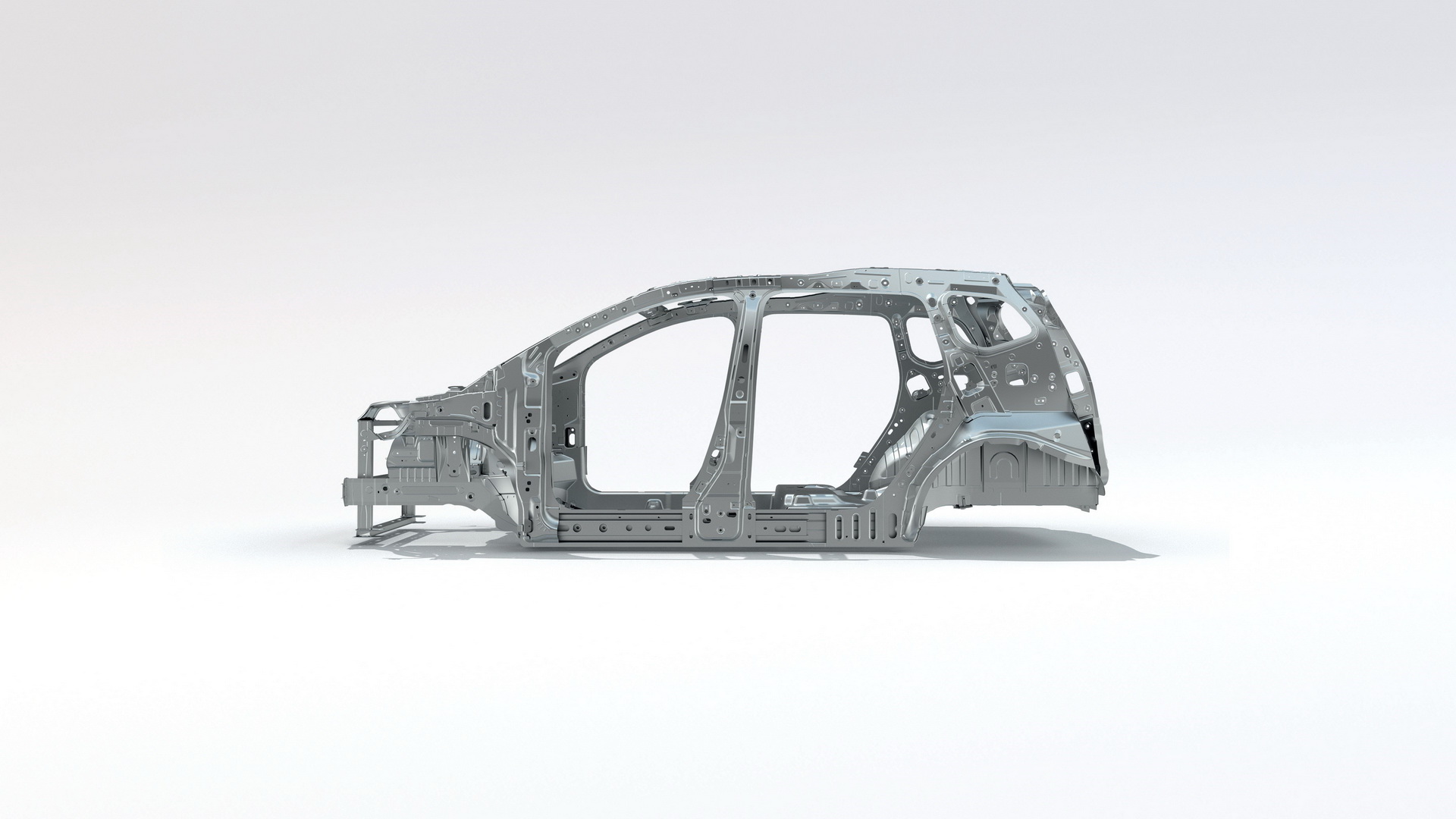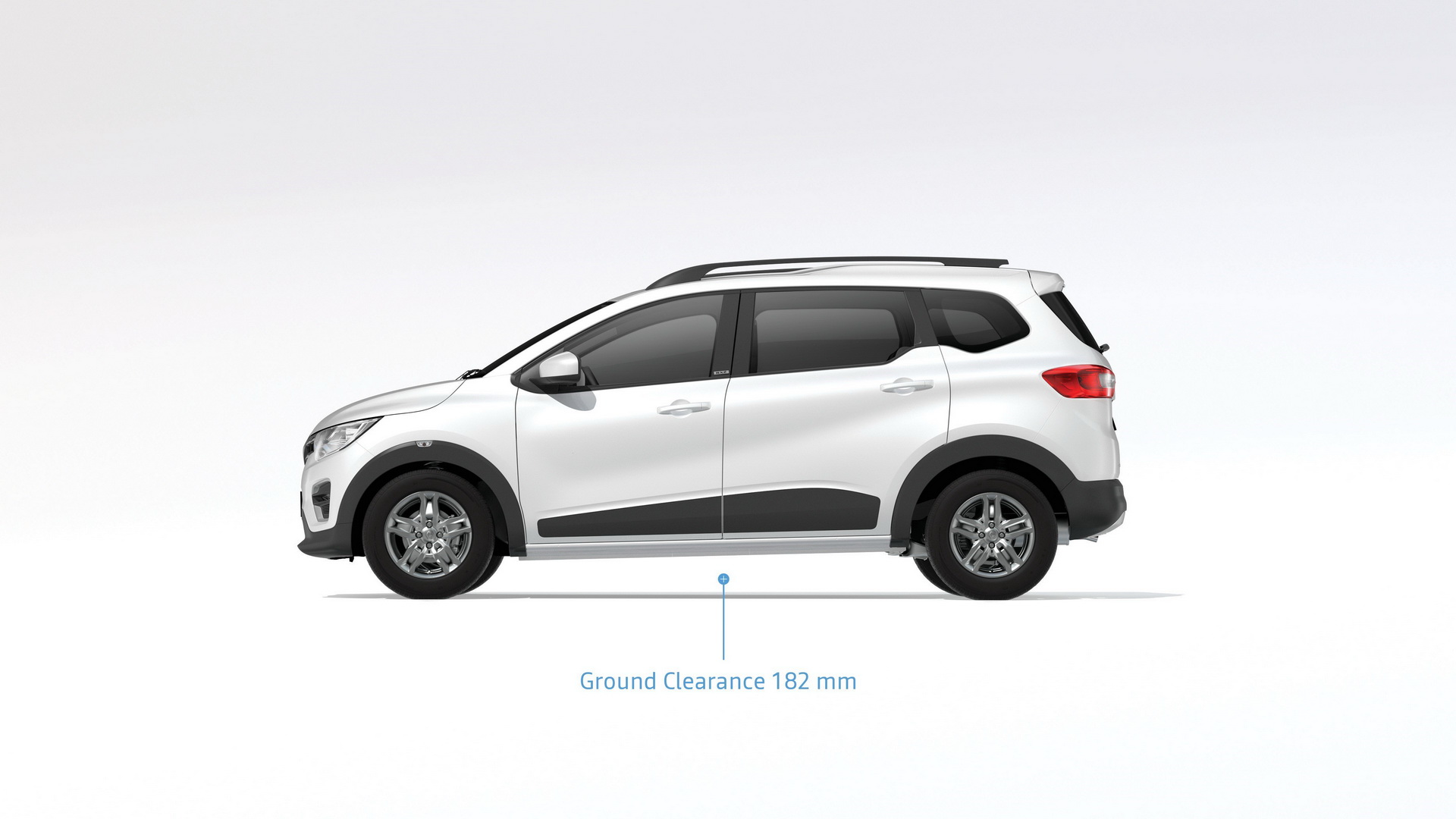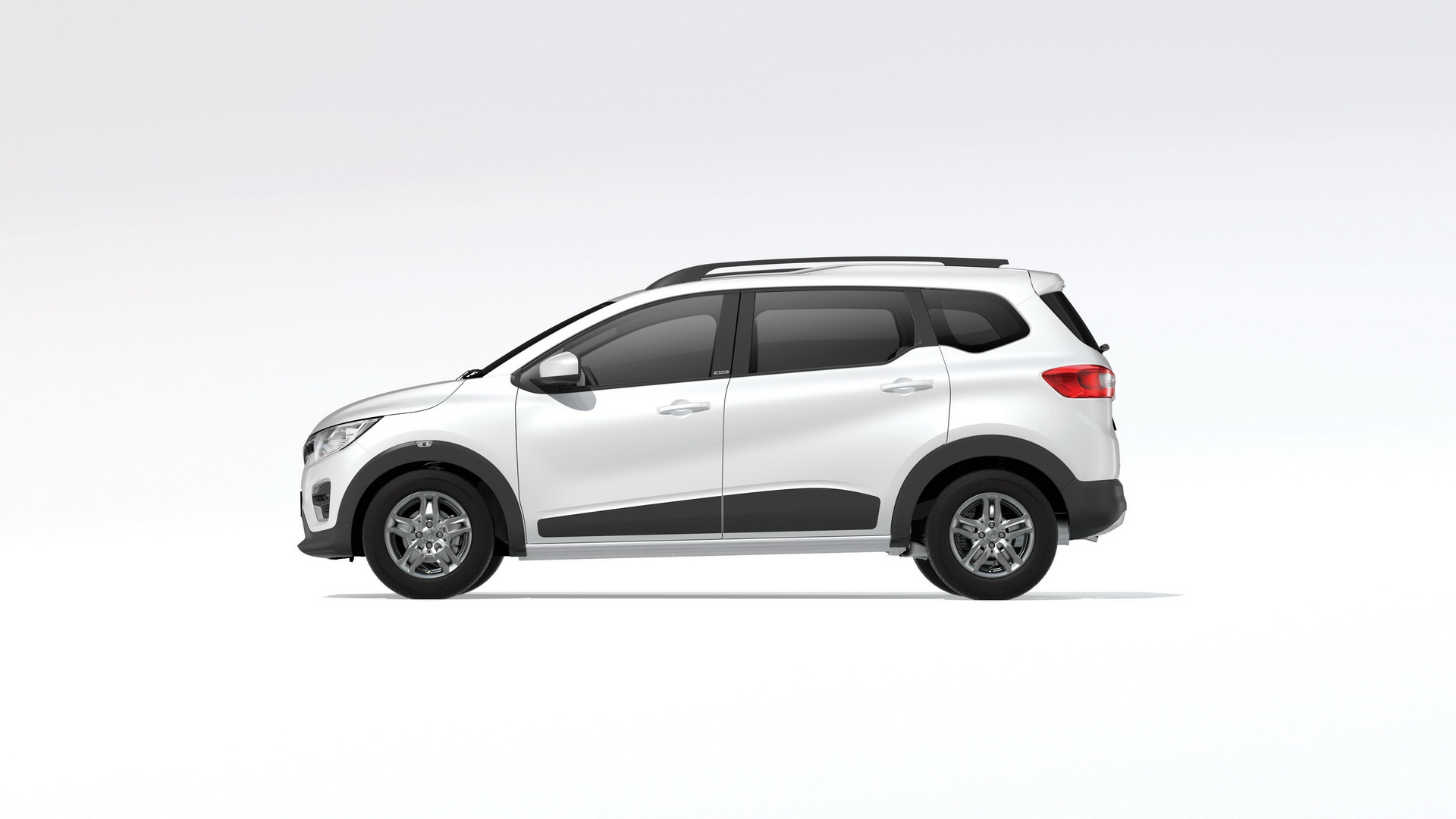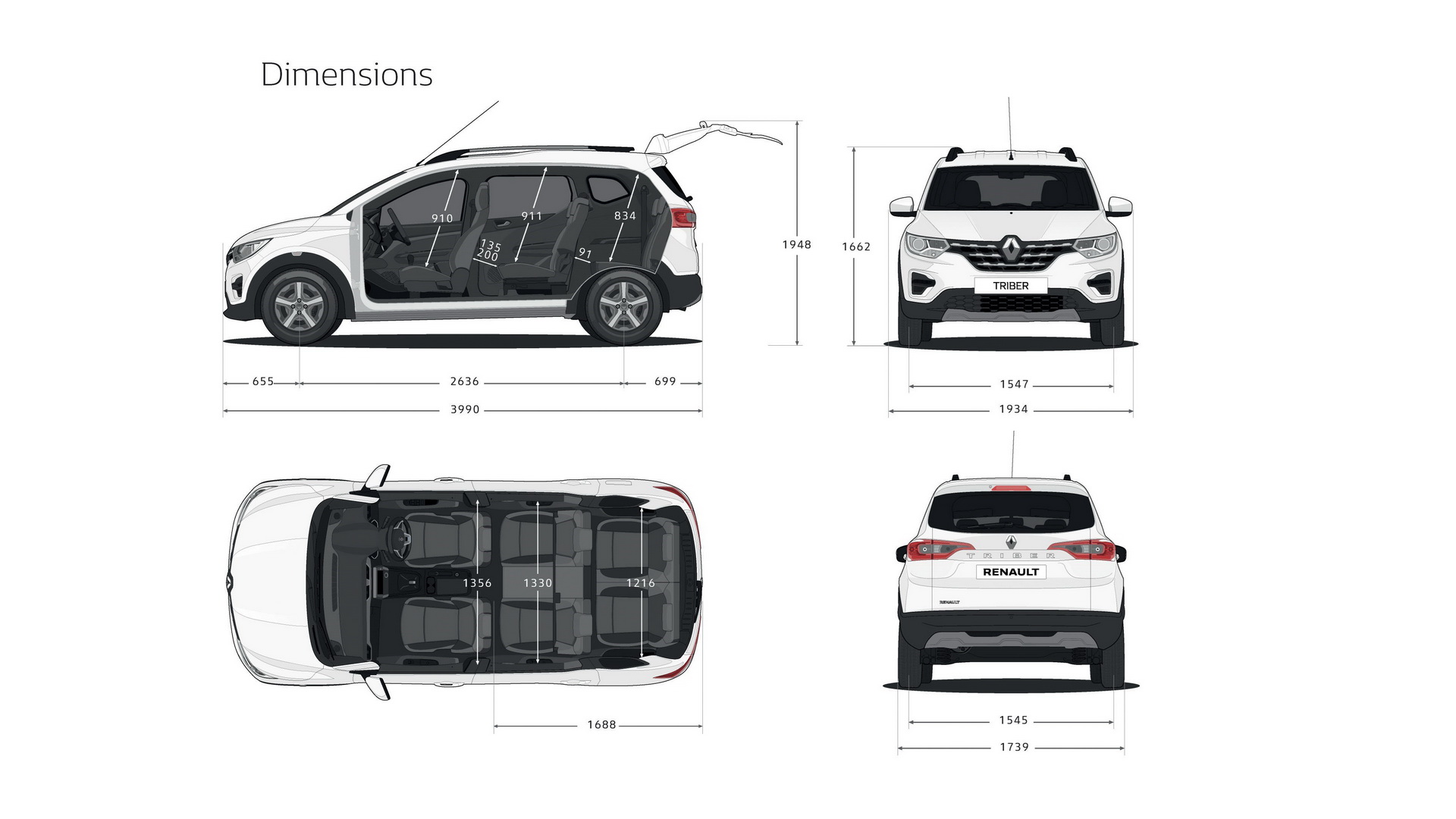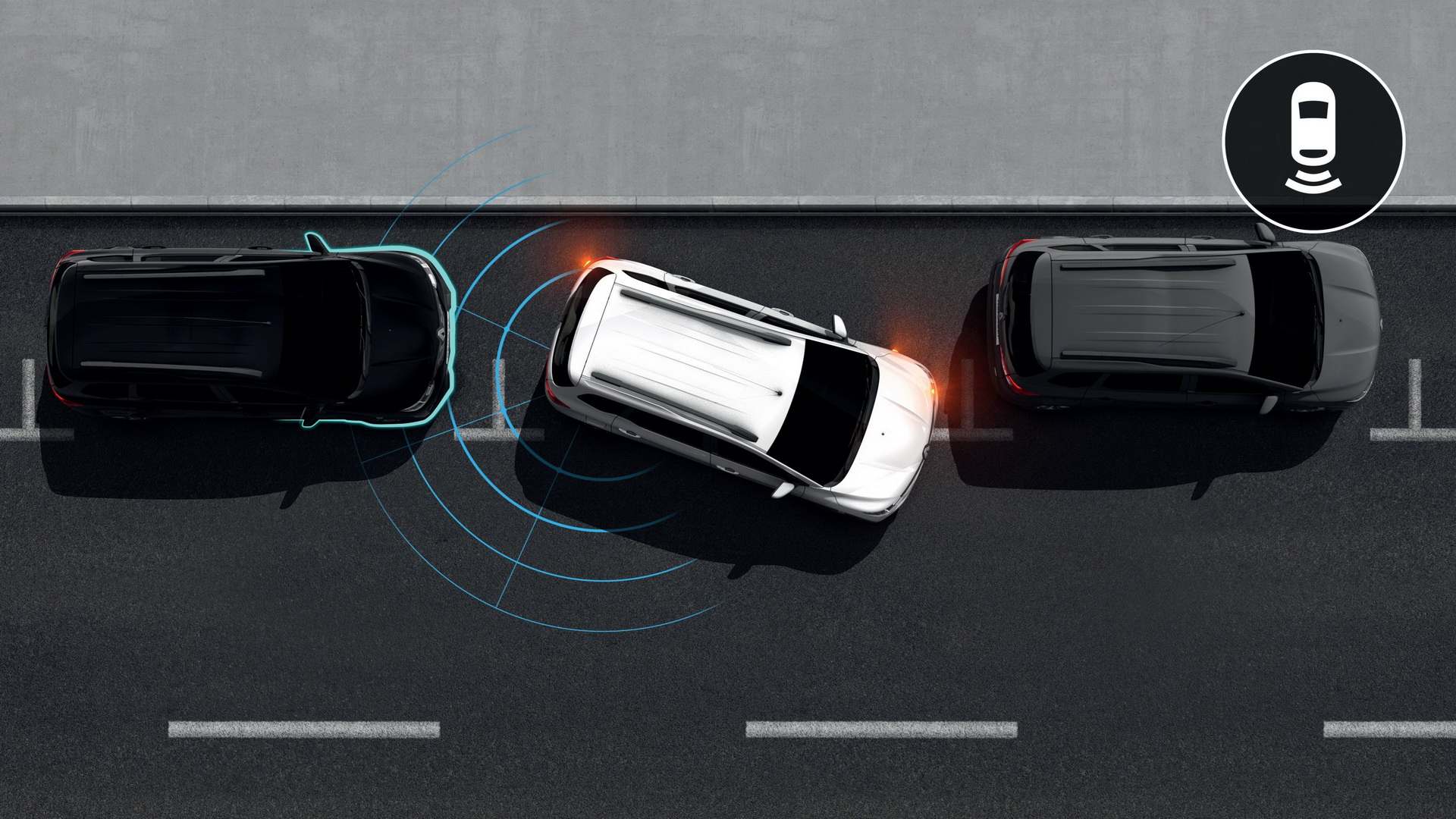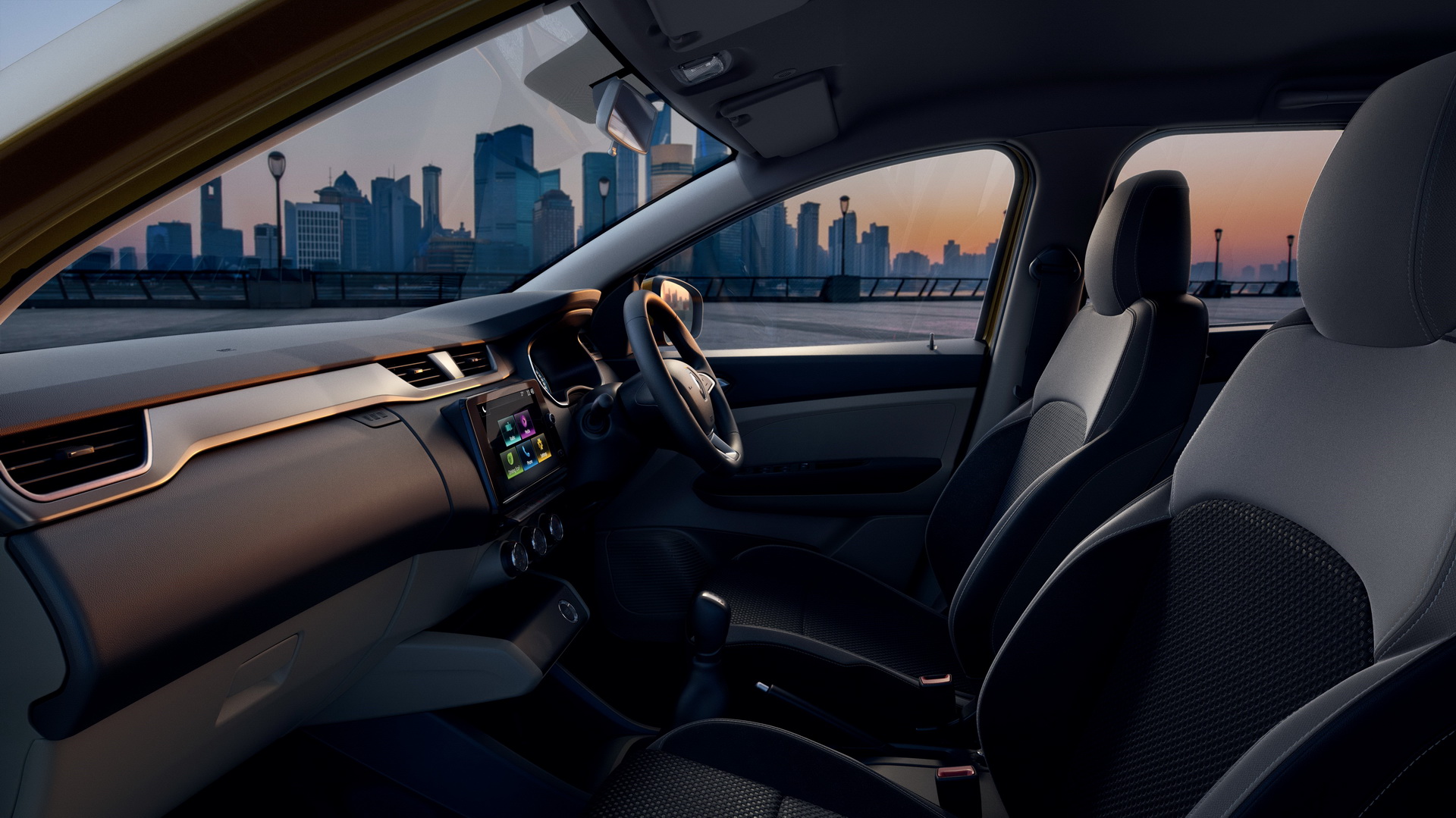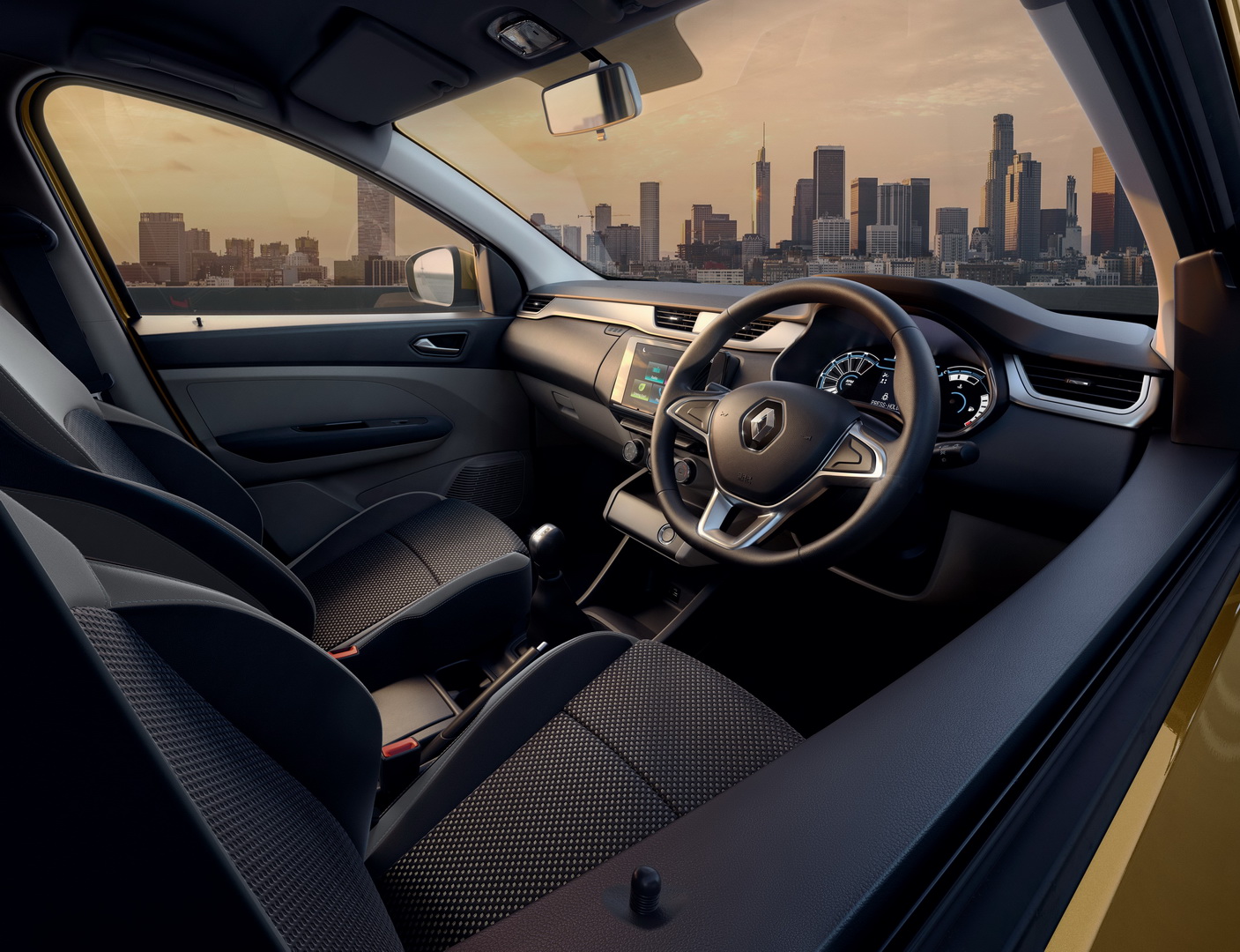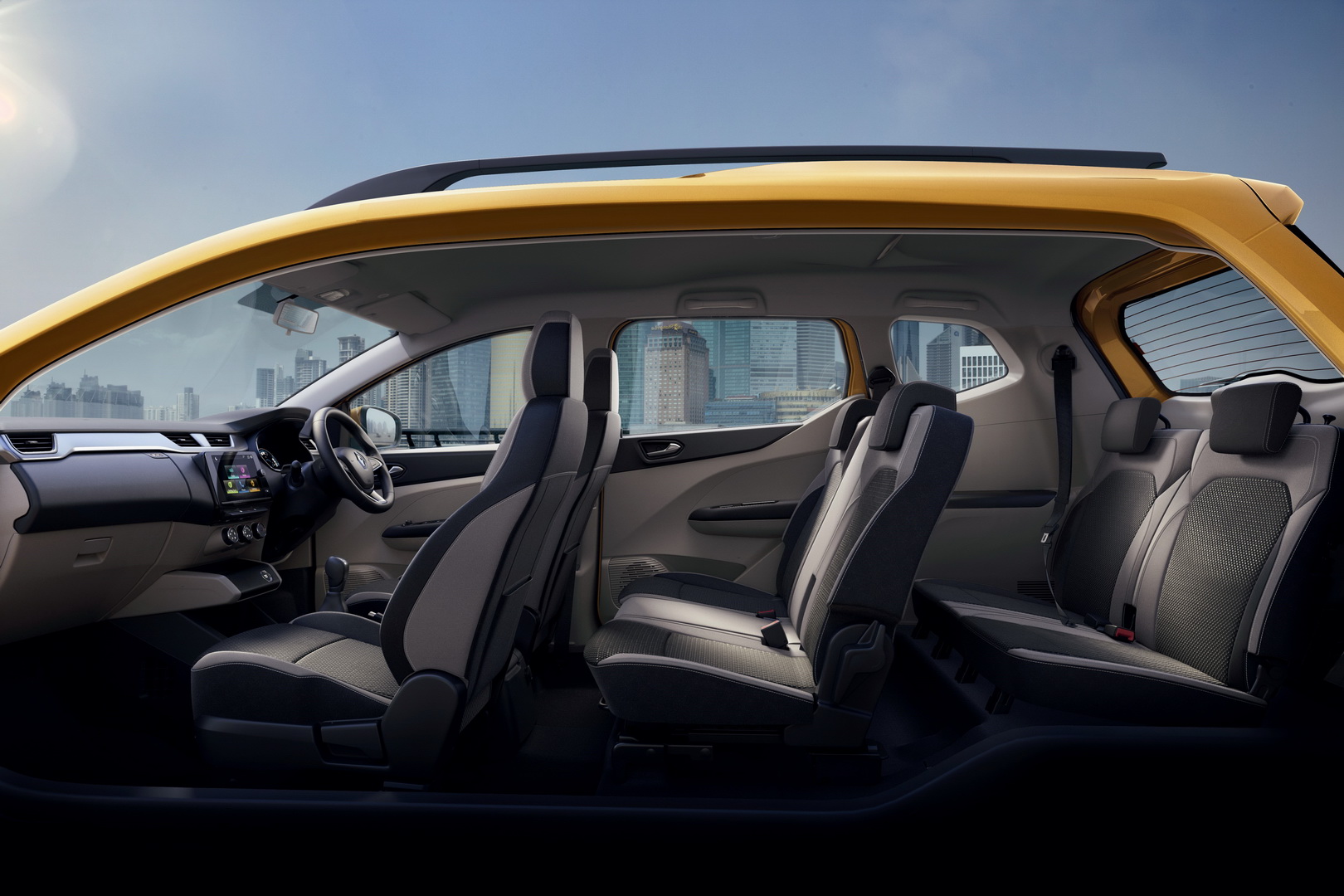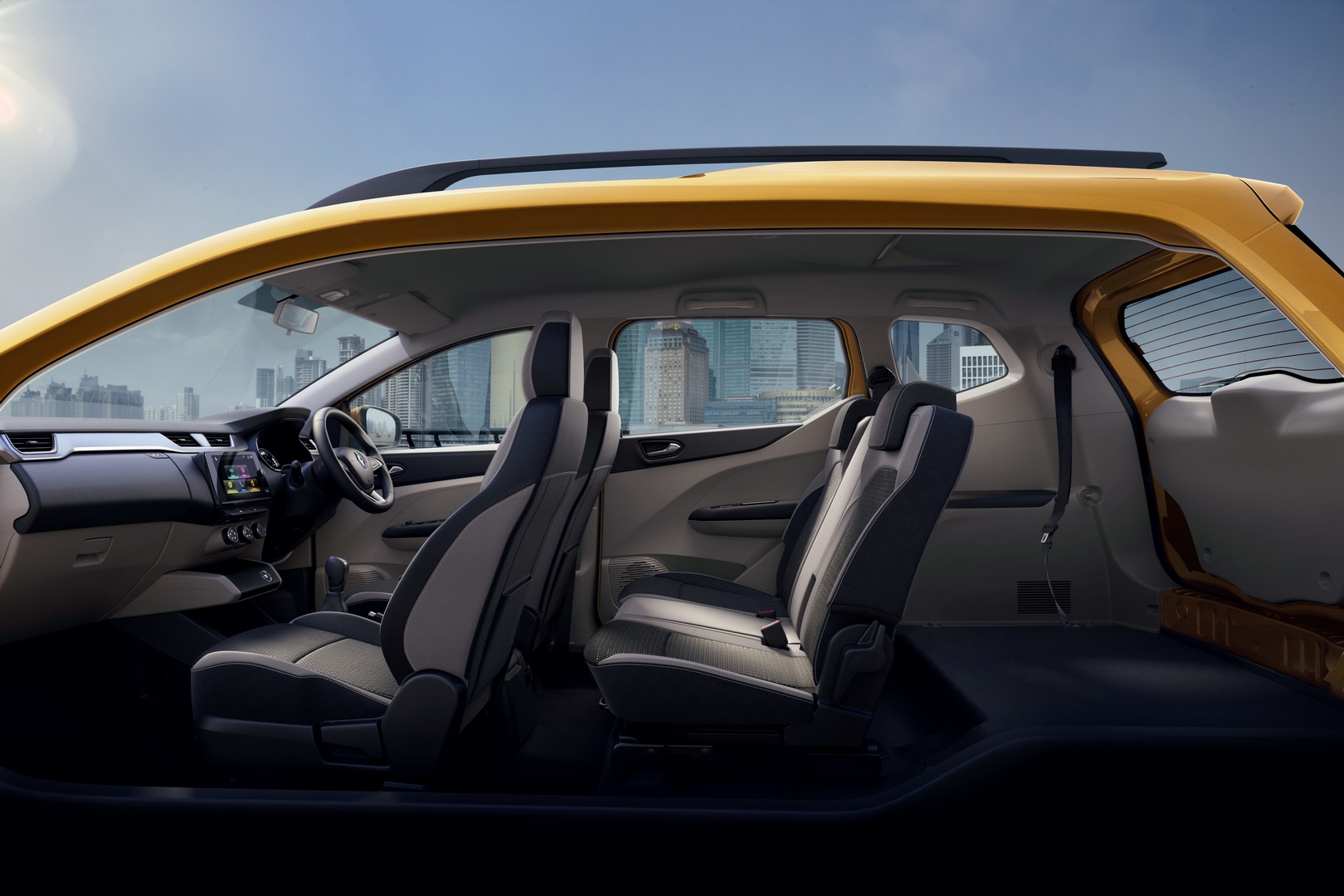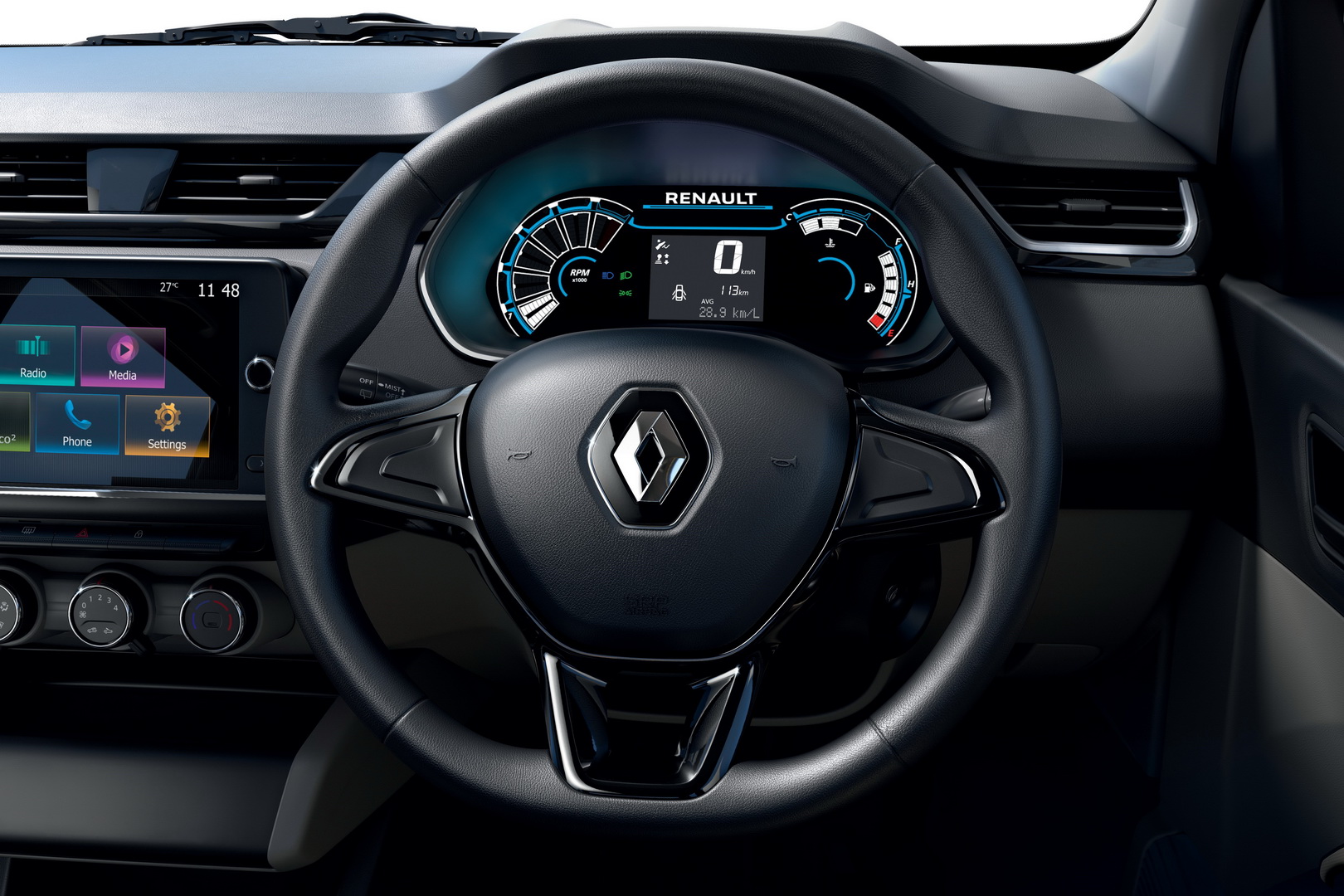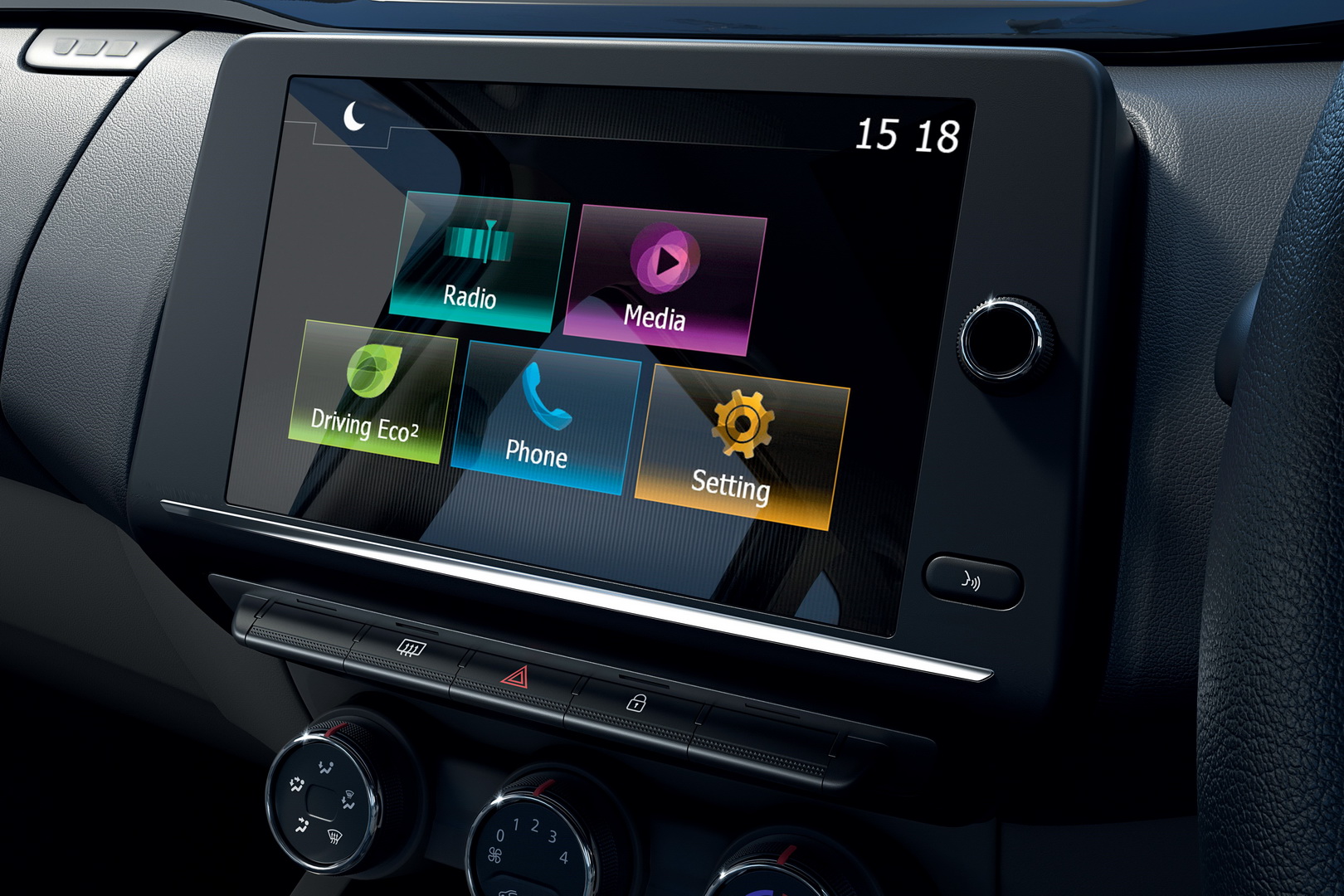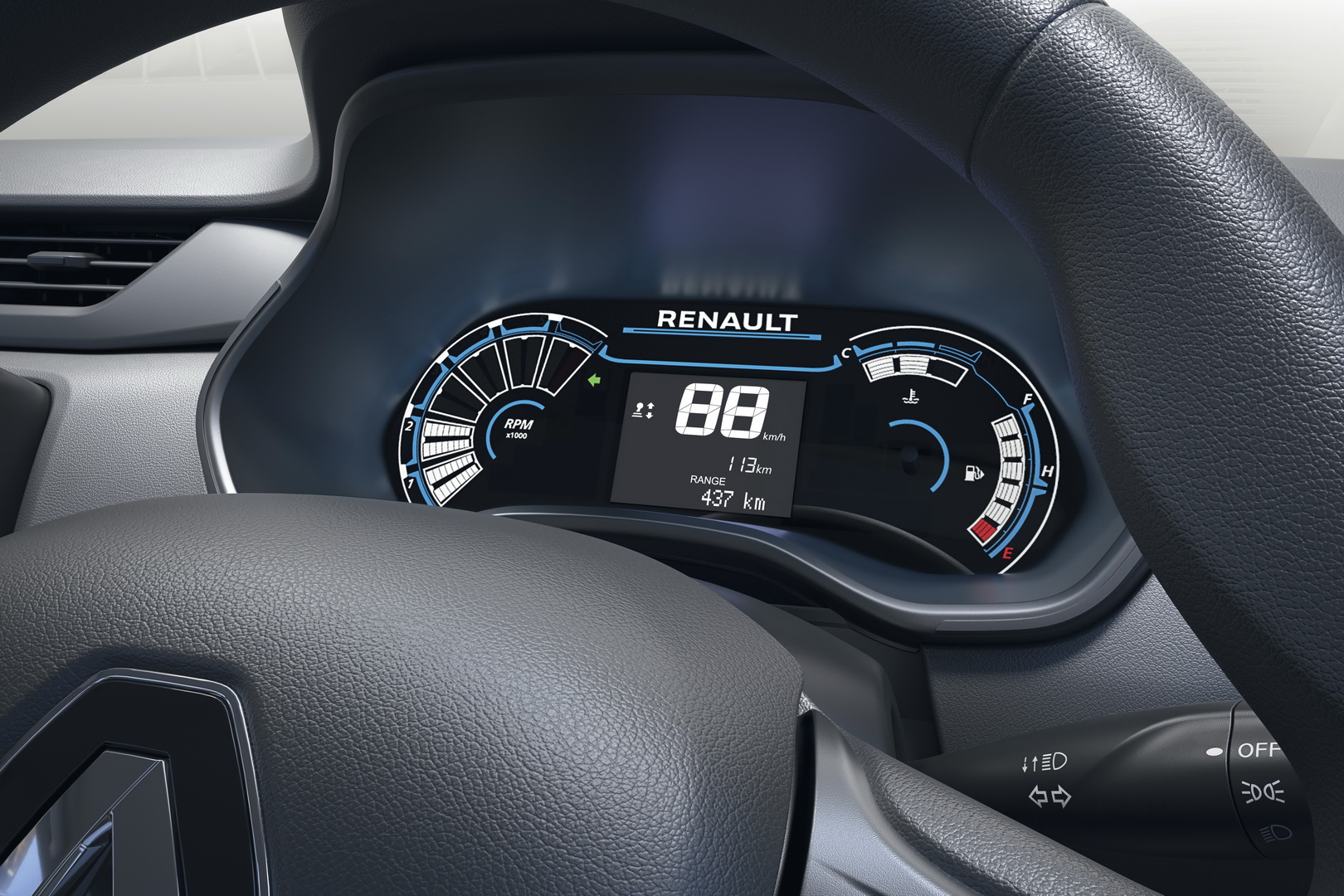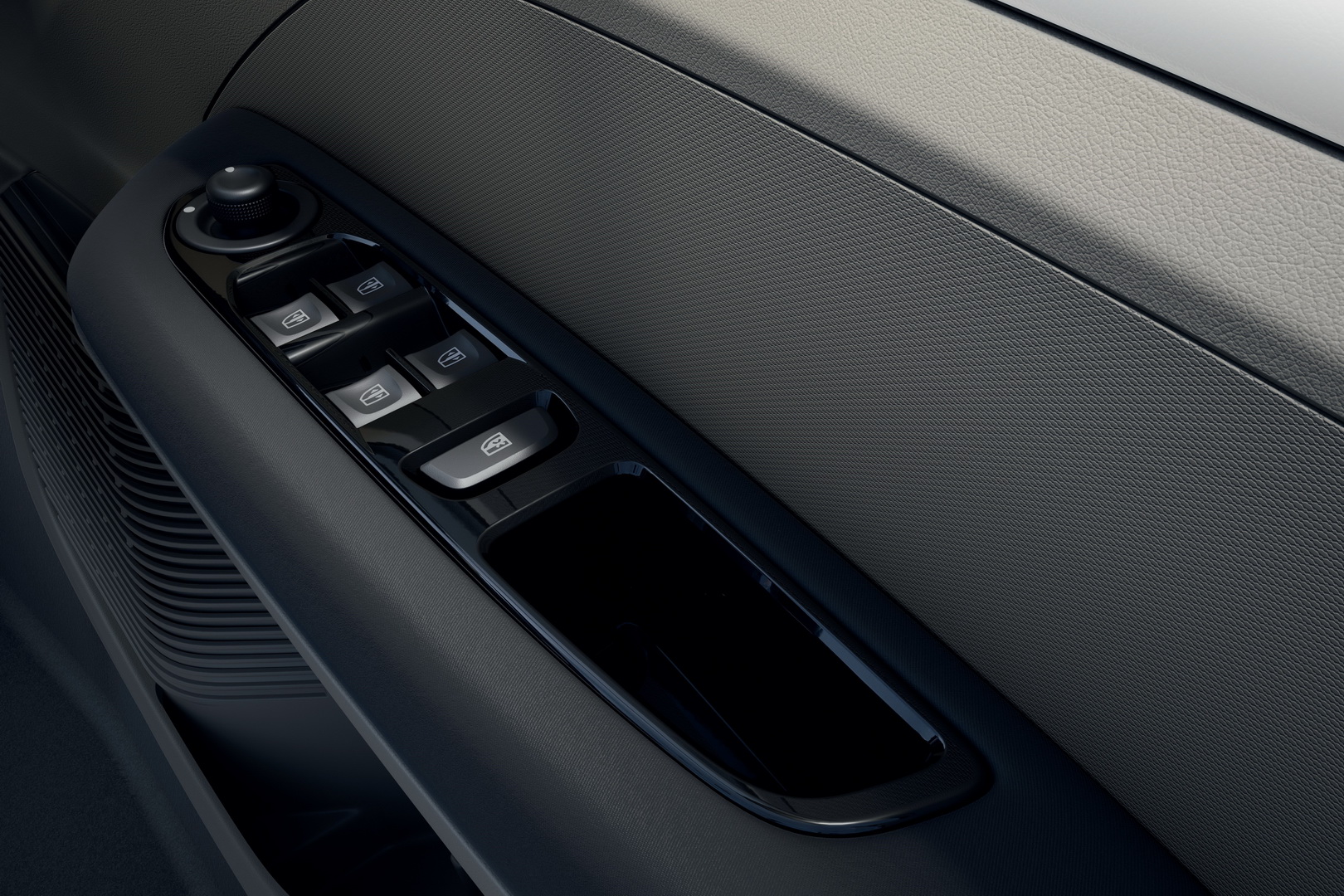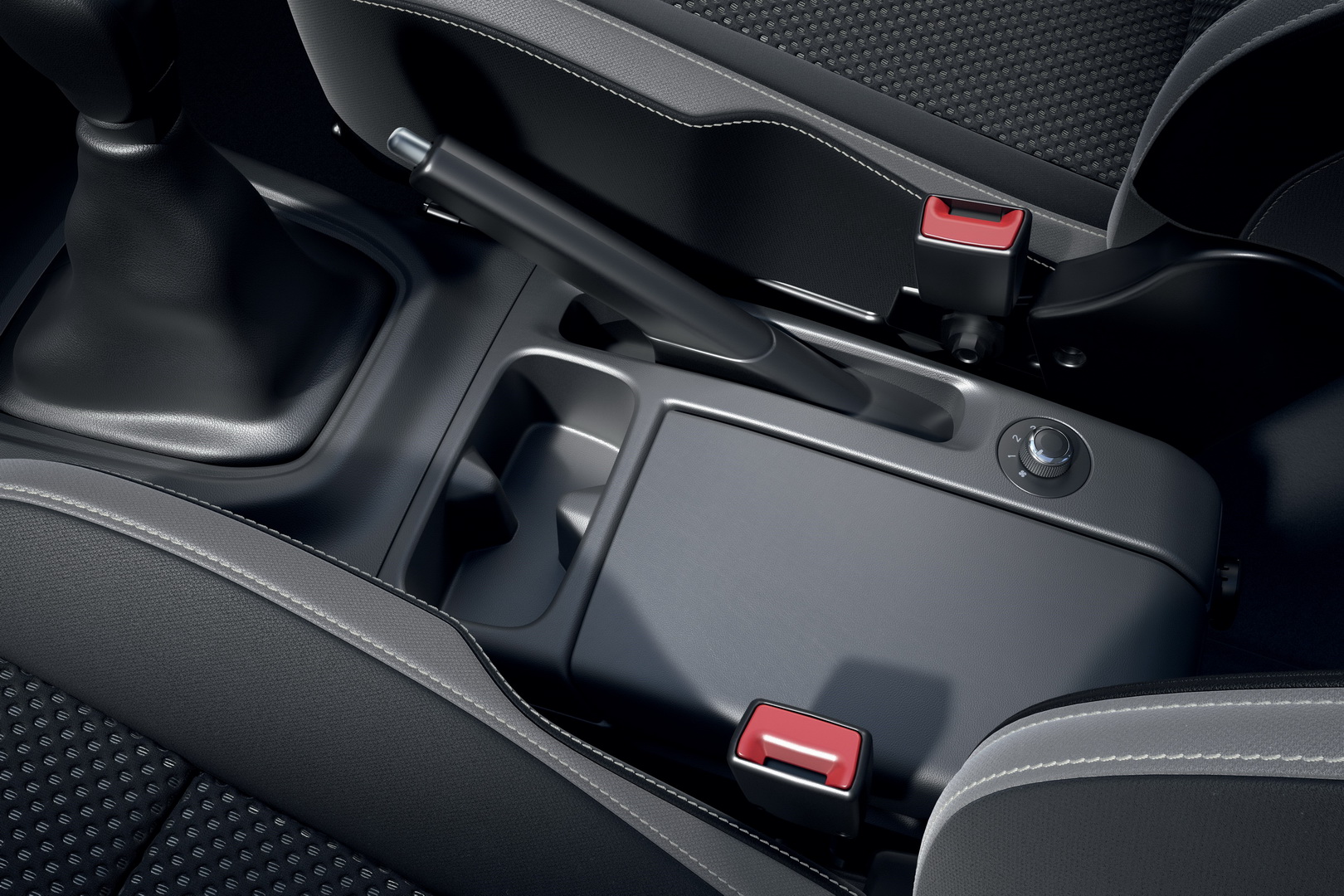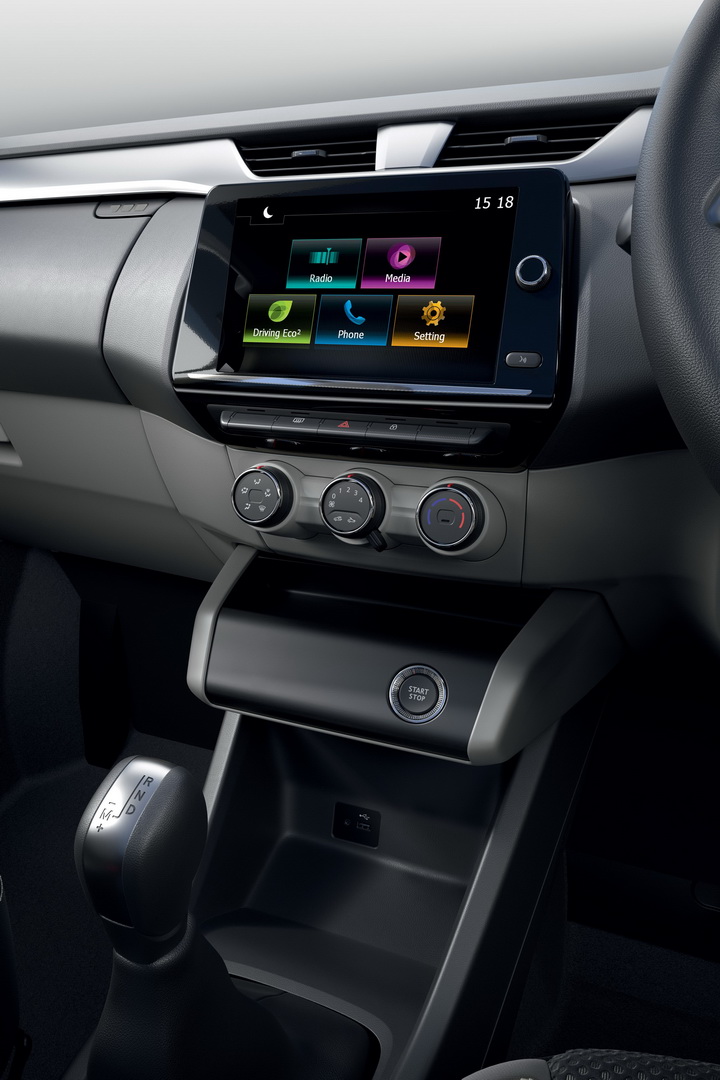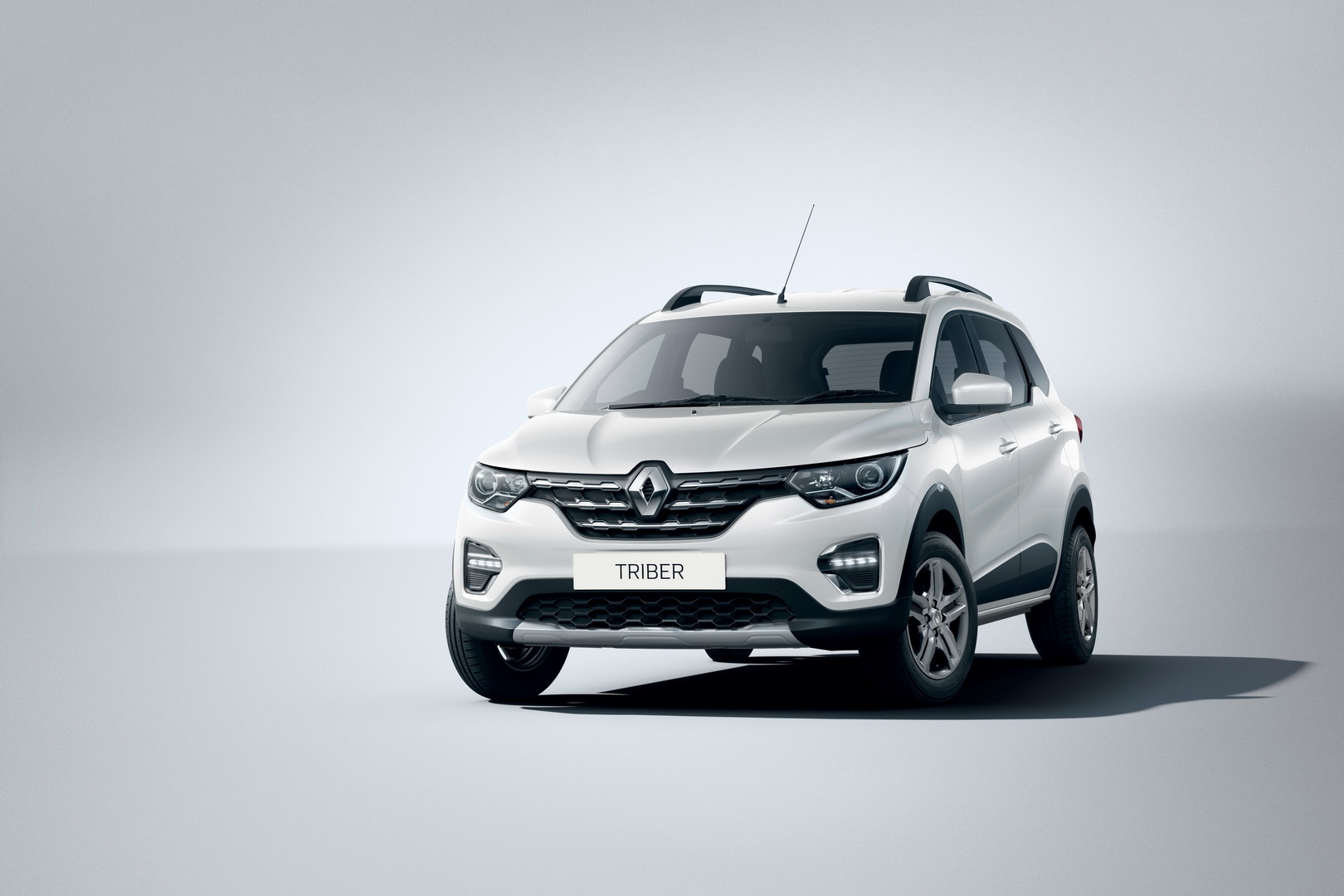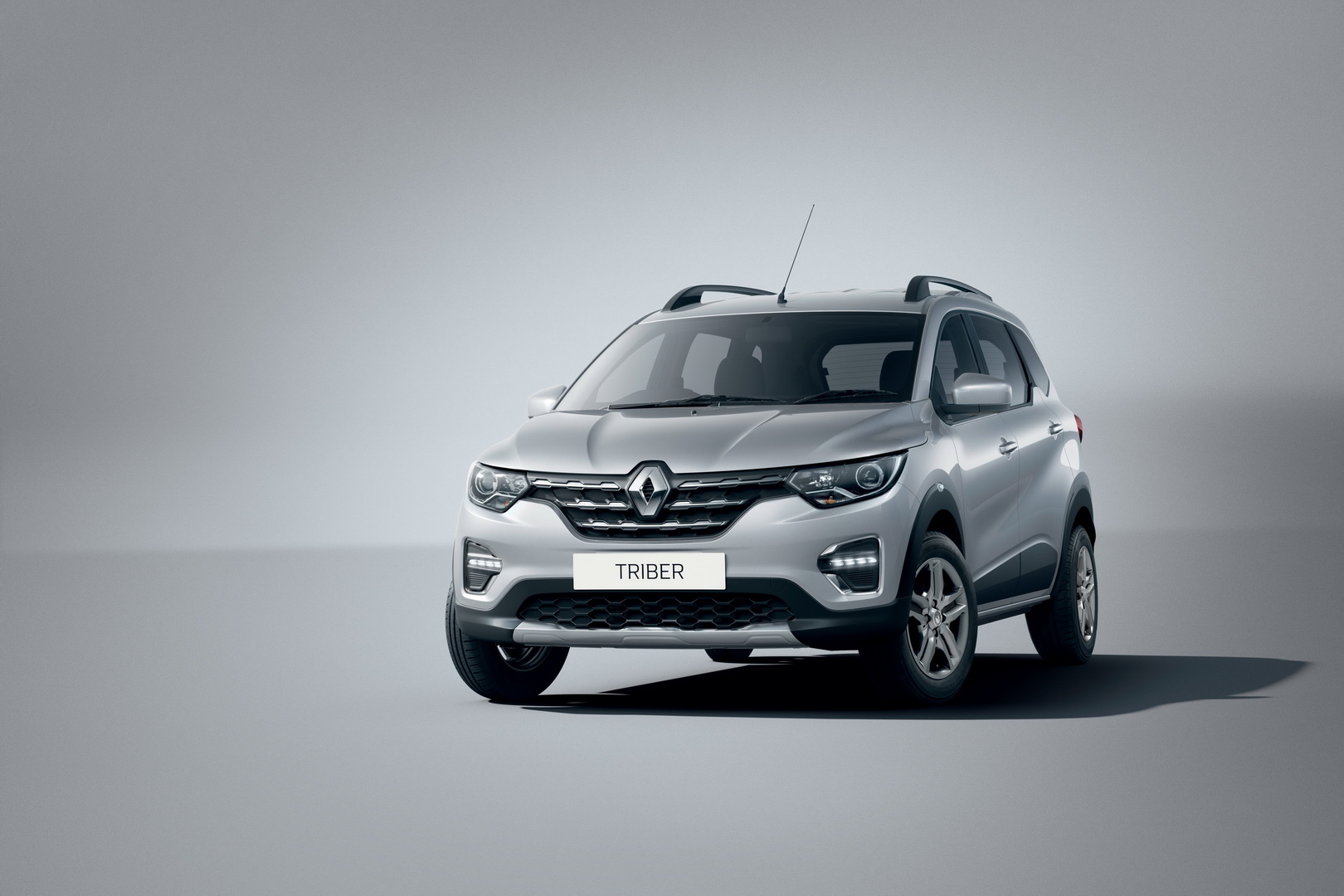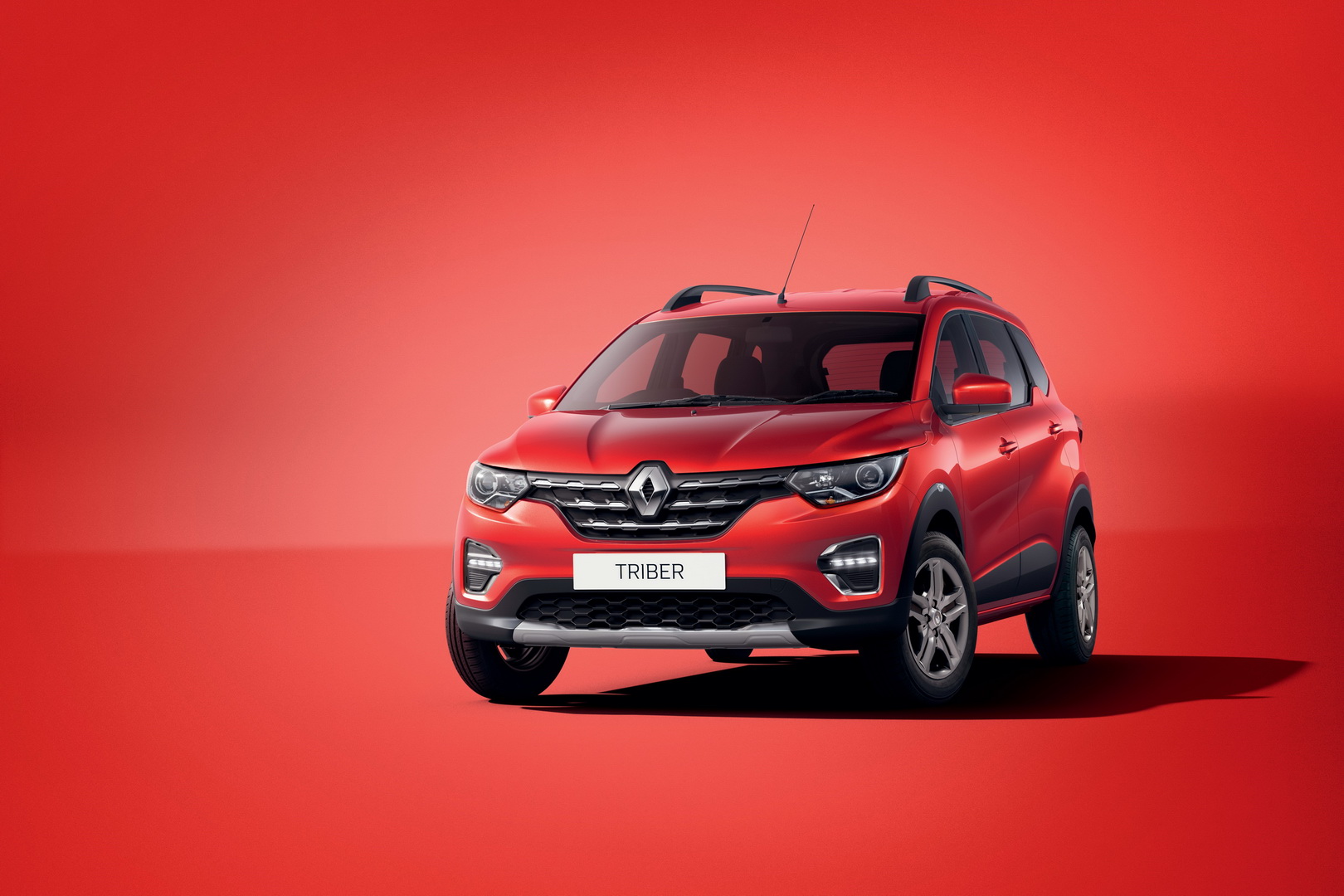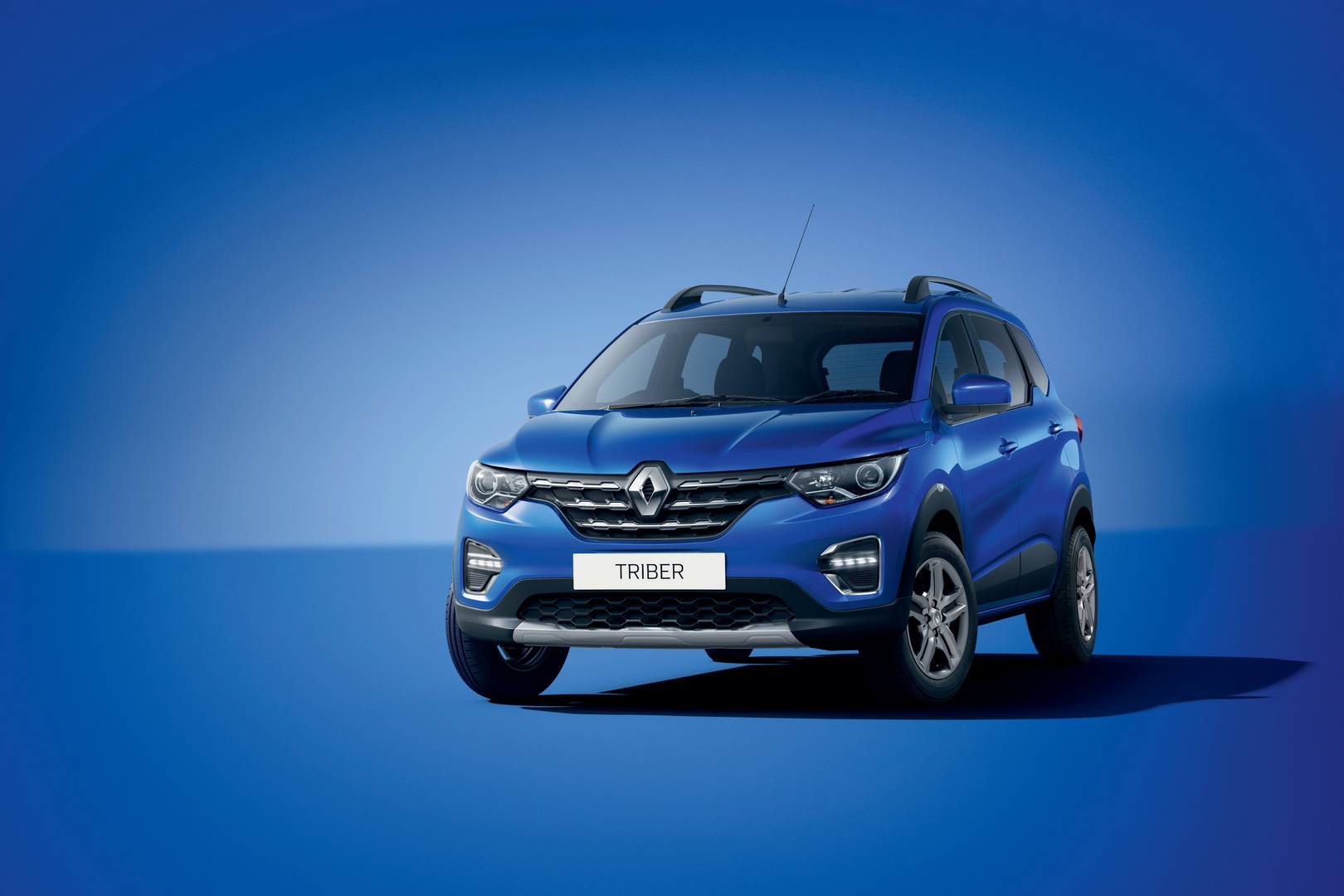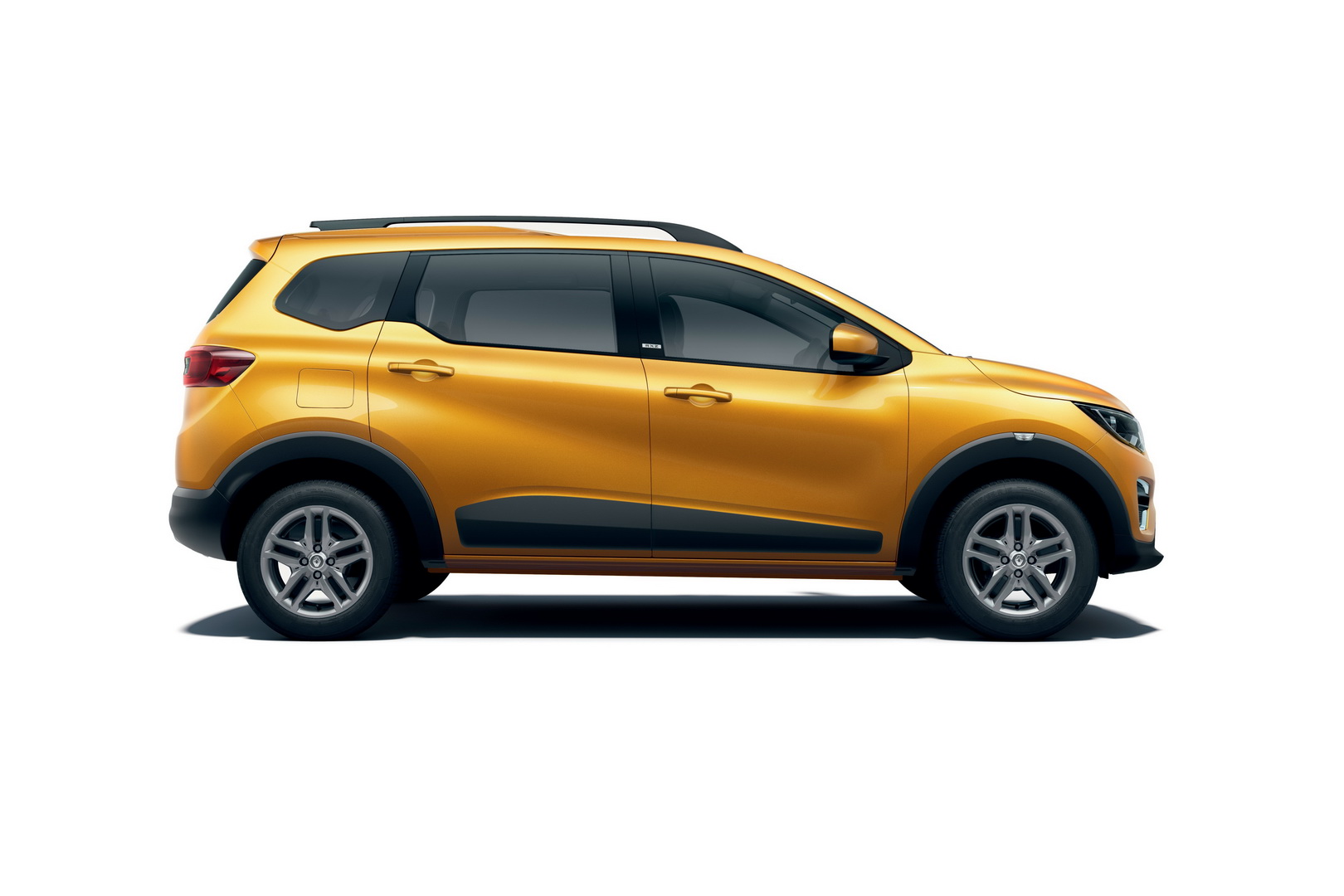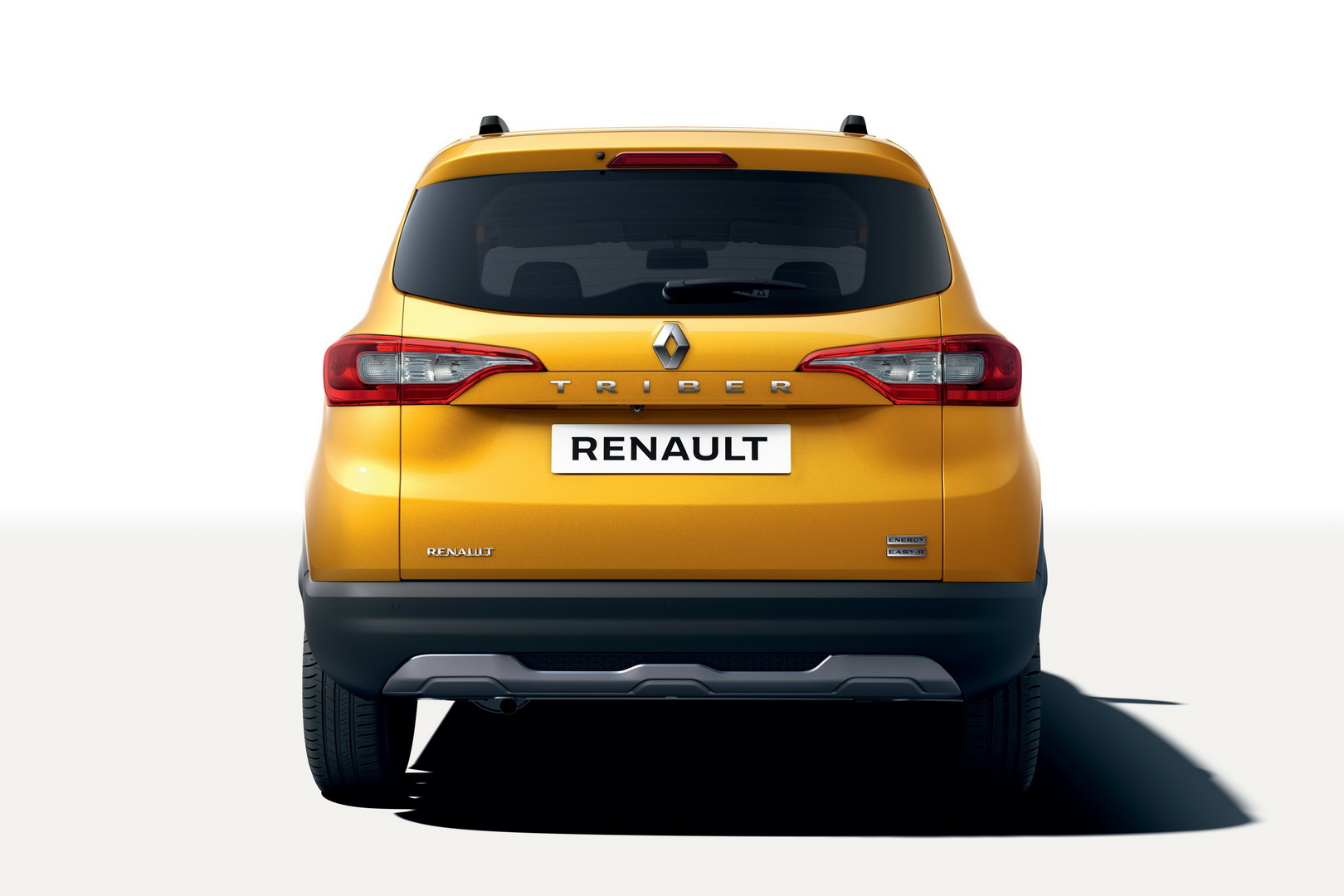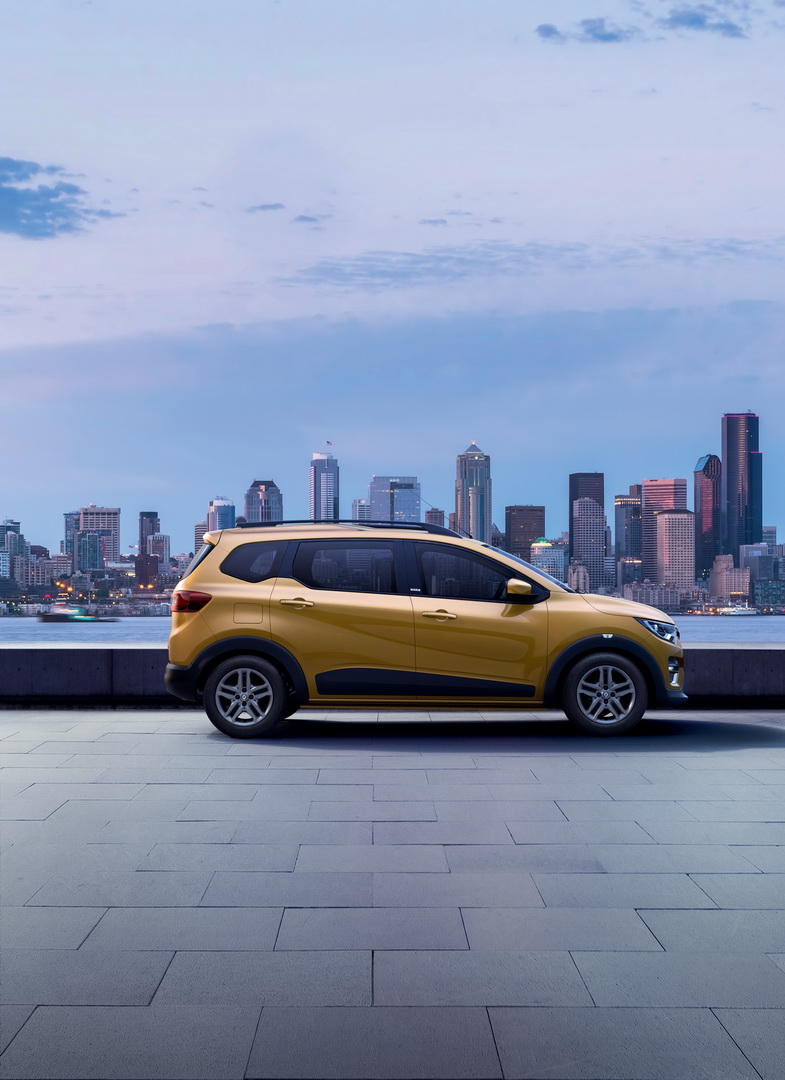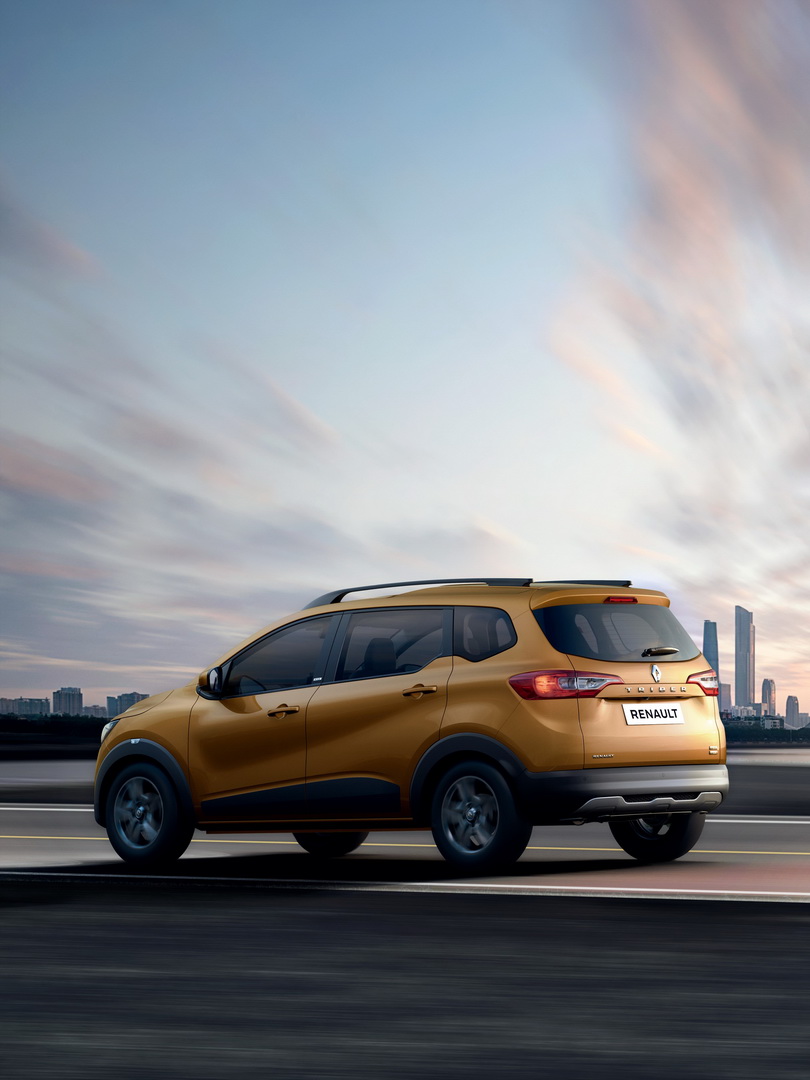Renault has expanded its high-riding vehicle lineup with the Triber, a small SUV aimed exclusively at the Indian market.
At 3,990 mm (157.1 in) long, 1,739 mm (68.5 in) wide and 1,643 mm (64.7 in) tall, the Triber is 132 mm (5.2 in) shorter, 39 mm (1.5 in) narrower and 76 mm (3 in) taller than the Captur. Its 2,636 mm (103.8 in) wheelbase is 30 mm (1.2 in) longer that the latter’s, while dry weight is rated at 947 kg (2,088 lbs).
Also Read: Are You The 2020 Renault Captur? Well, You Sure Look The Part
Despite its small proportions, the Triber offers seating for up to 7 occupants. In this configuration, boot space is almost nonexistent – 84 liters (3 cu-ft). With six seats, cargo capacity goes up to 320 liters (11.3 cu-ft), and with the removal of the third-row it gets 625 liters (22.1 cu-ft). Versatility is at home inside, as Renault said the small SUV has more than 100 different possible seating configurations and also features sliding and reclining second-row and individual third-row seats that are easy to install and remove.
Elsewhere, the interior of the Triber is minimalistic, featuring a typical Renault steering wheel, albeit without any buttons, plus what what appears to be a digital gauge cluster. There’s a medium-sized infotainment system in the center of the dashboard, manual air conditioning, electric windows and side mirrors, keyless ignition, a manual parking brake and a small knob next to it, used to control the rear heating, ventilation and air conditioning – as there are air vents for all rows of seats. There are also several storage spaces throughout the cabin, 12V charging ports and USB sockets.
On the outside, the Triber is easily recognizable as a Renault, thanks to its front end design. However, if you swap in a few Dacia badges, install a new grille and make the rear end a bit less Ford EcoSport-ish, it could easily pass as something that’s made in Romania.
As for its underpinnings, the automaker said that it’s based on a new modular platform, made by the Alliance, “that will address Renault’s B-segment ambition in India”. It does share a 1.0-liter, three-cylinder engine with the Clio and the Sandero though, good for 72 PS (71 hp / 53 kW) and 96 Nm (71 lb-ft) of torque. The unit can be coupled to a five-speed manual or an automatic transmission.
But where does the Triber name come from? Well, the French automaker explained that “in India, locals like to travel with their family or as a ‘tribe’, without having to spend a fortune on a big car”. So, there you have it – tribe = Triber.
Renault will launch this new crossover in the Asian country in the second half of the year, promising a “competitive price” despite the Triber not having any direct rivals. Production will take place at the Chennai facility.



